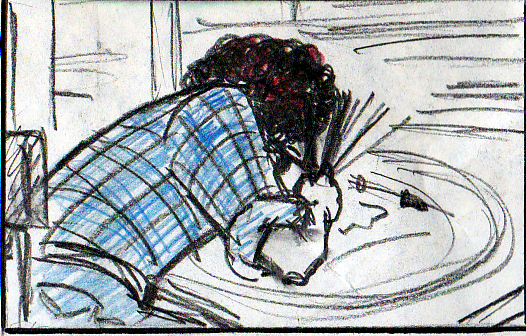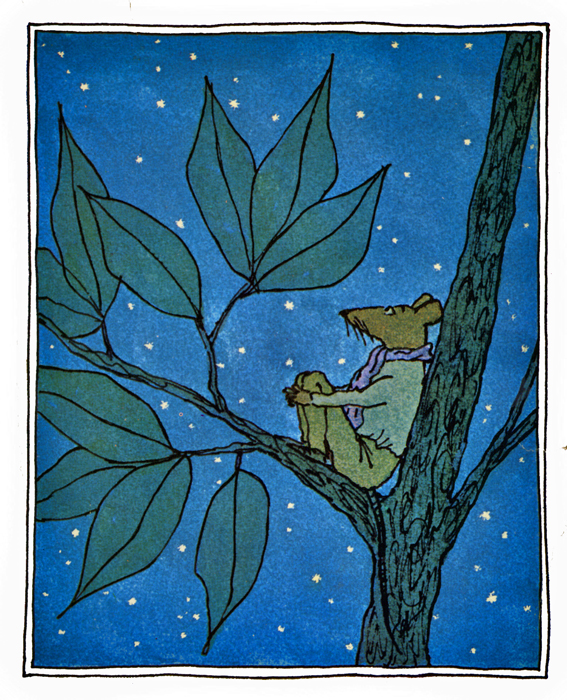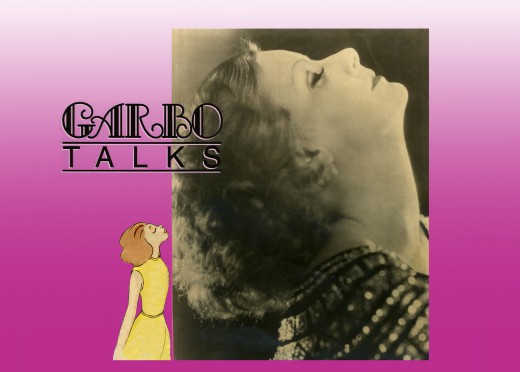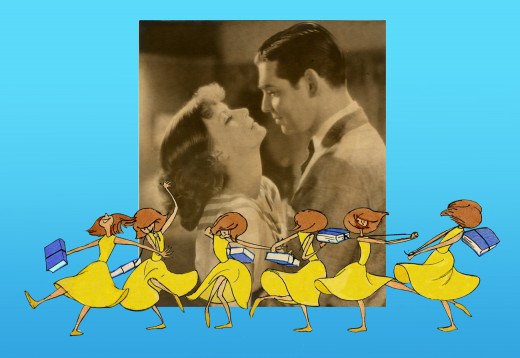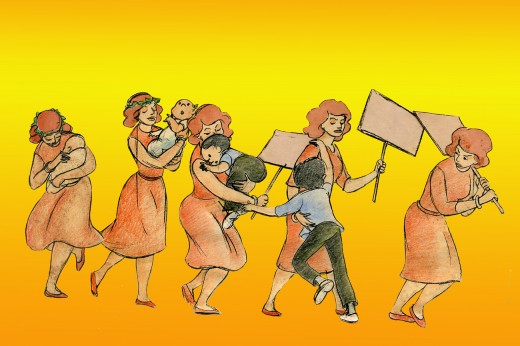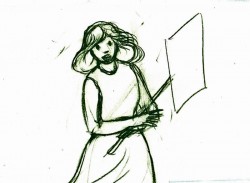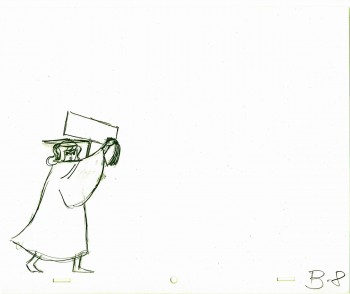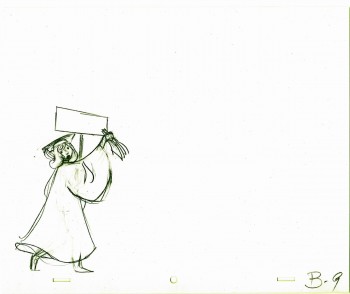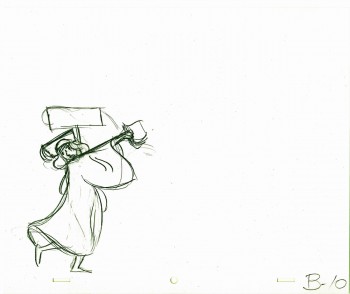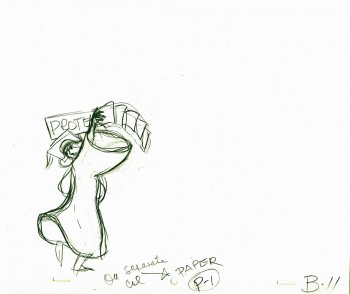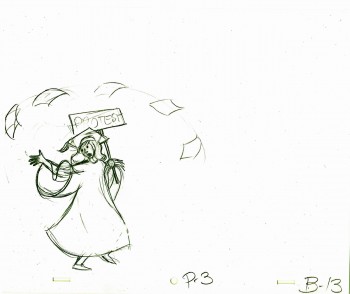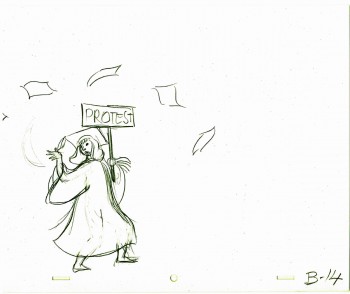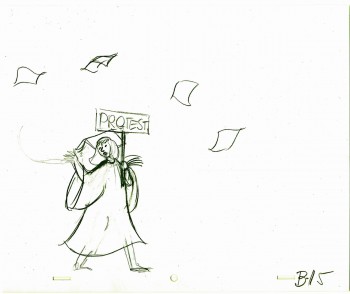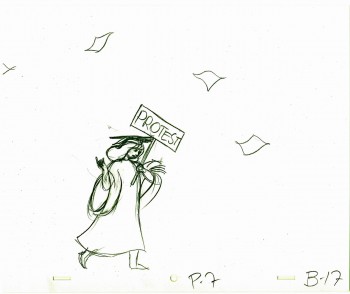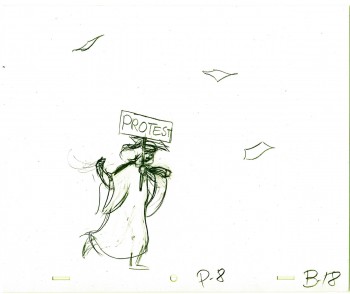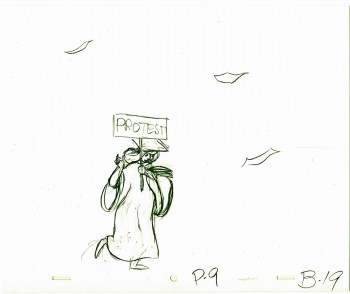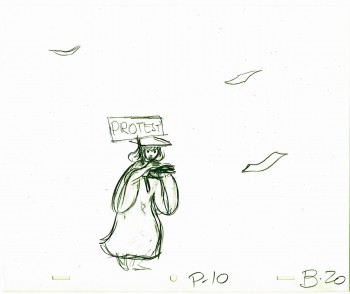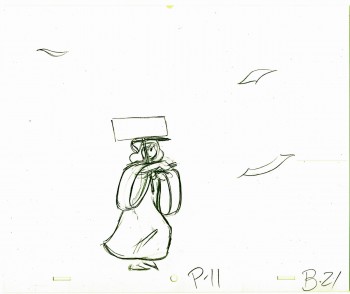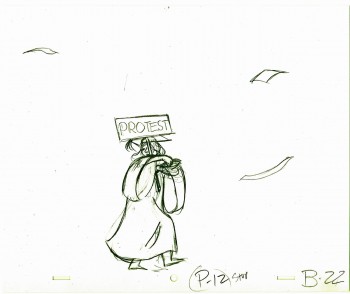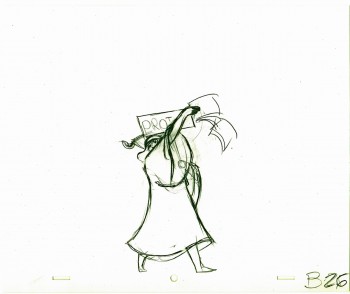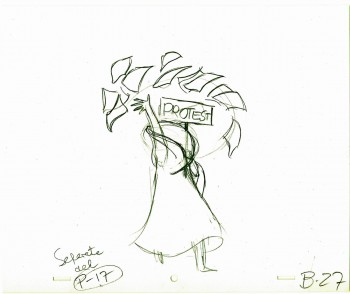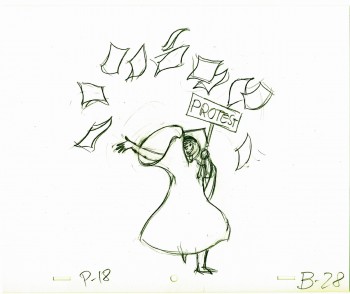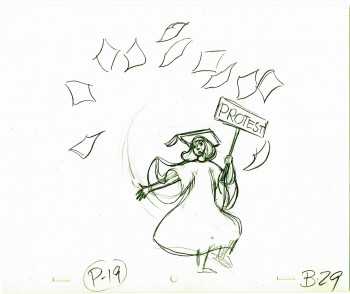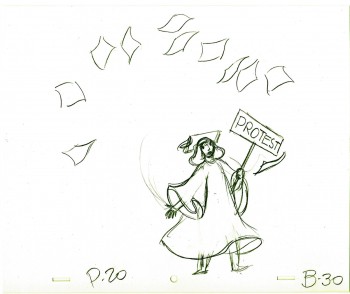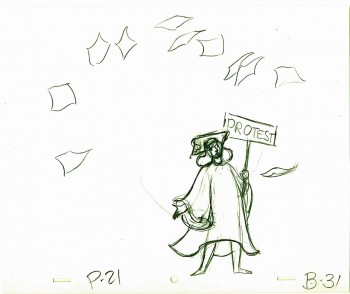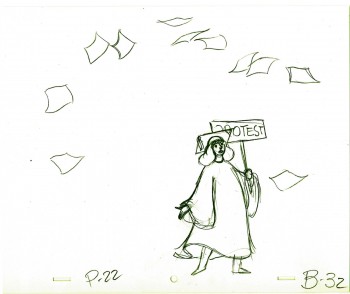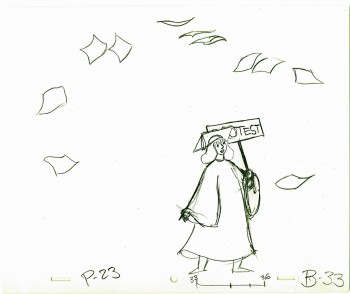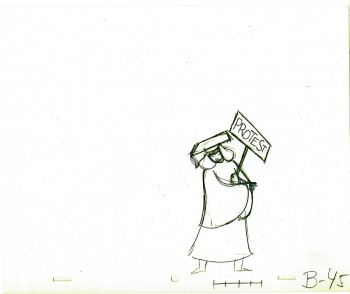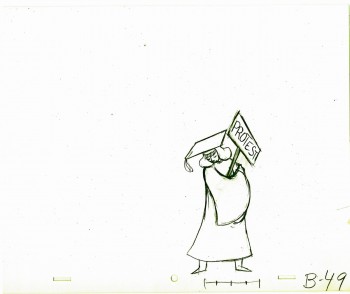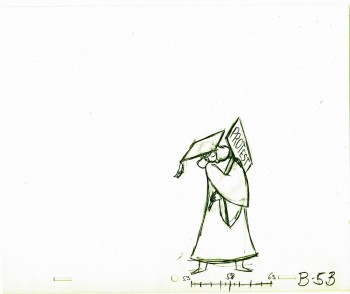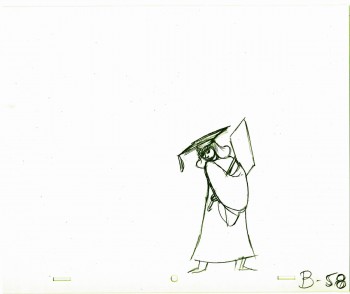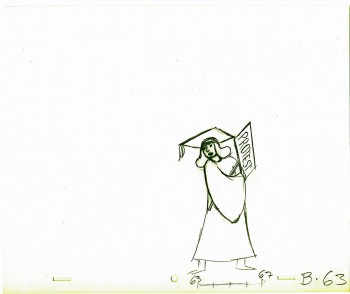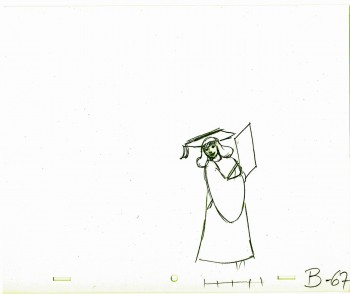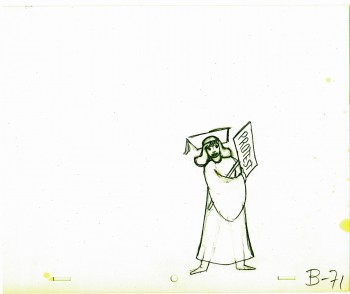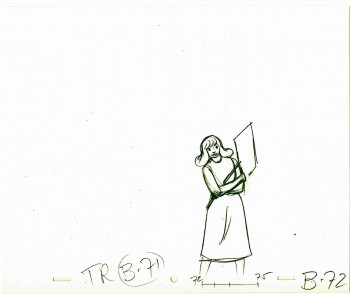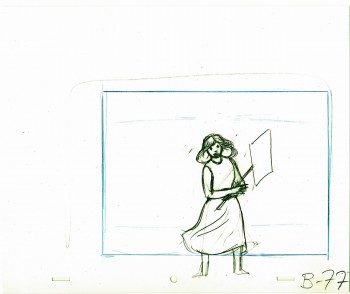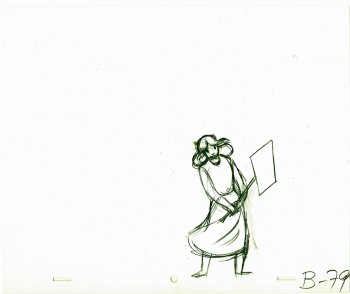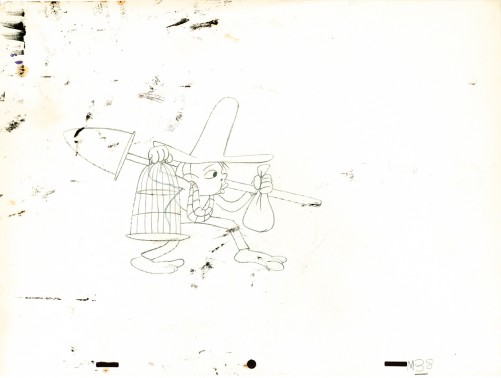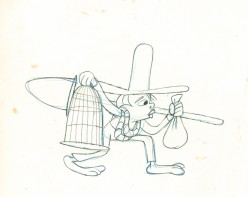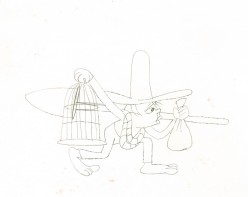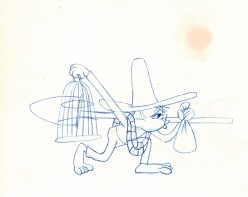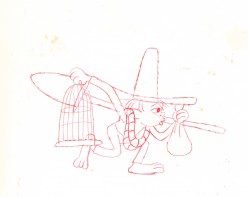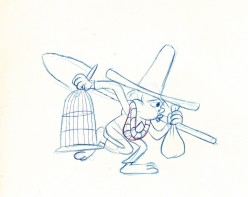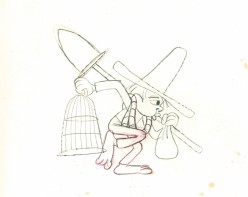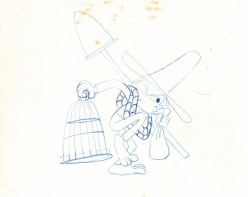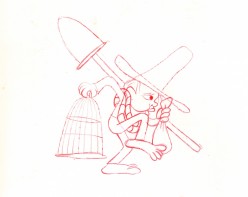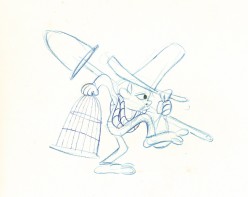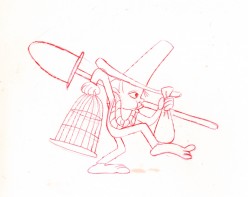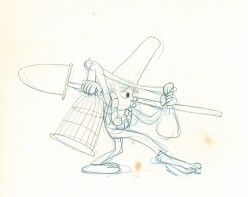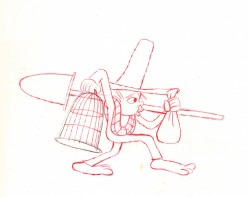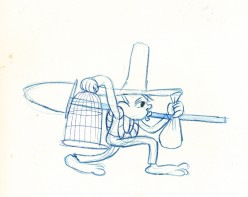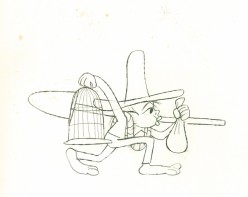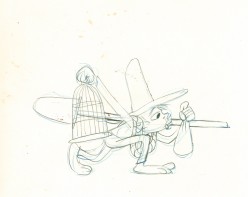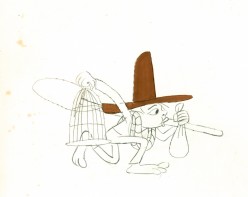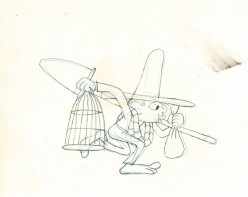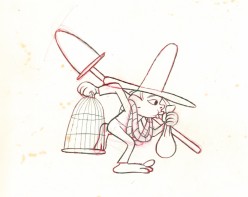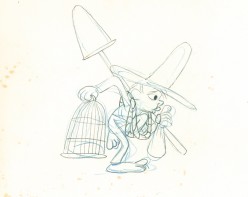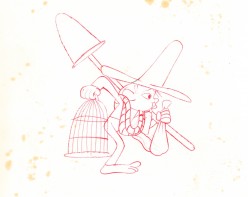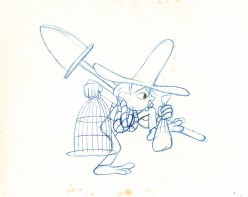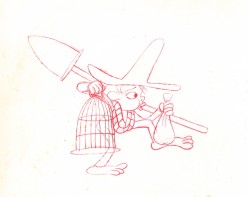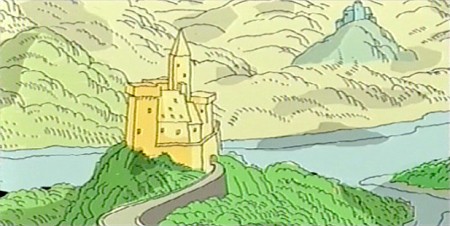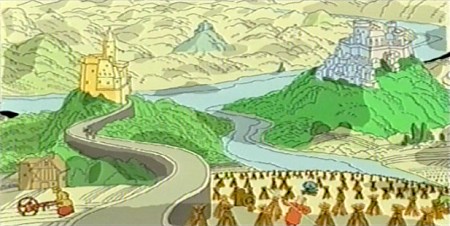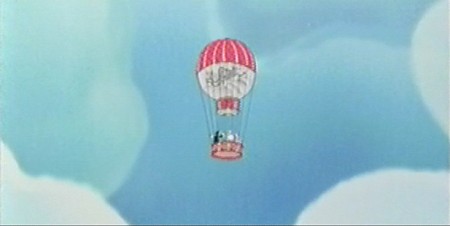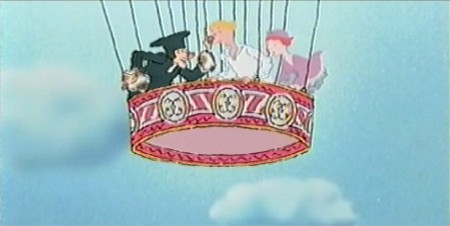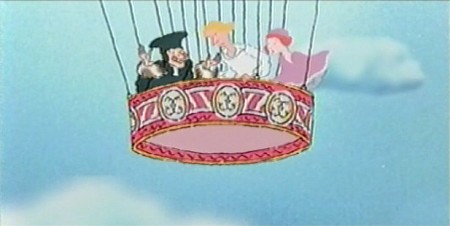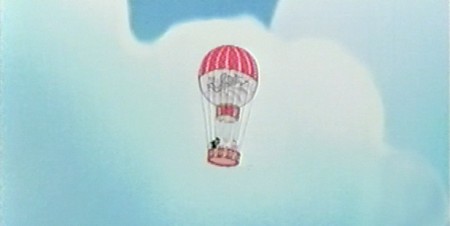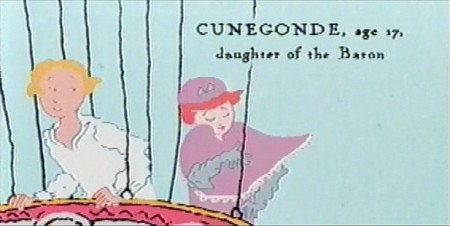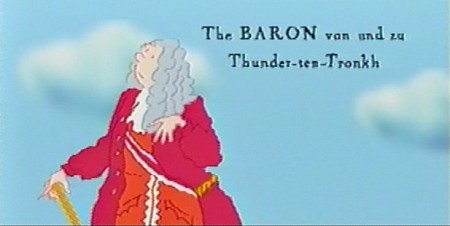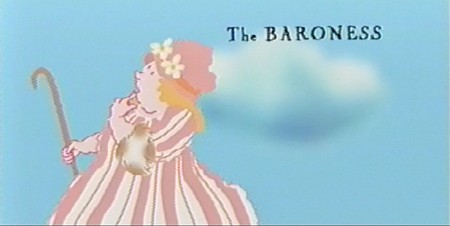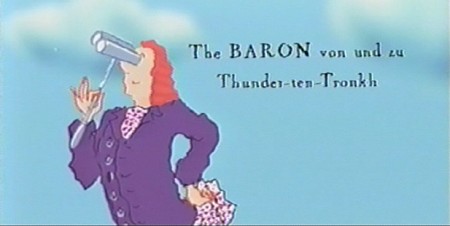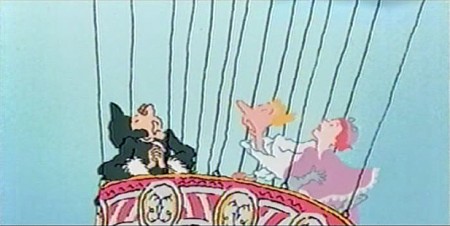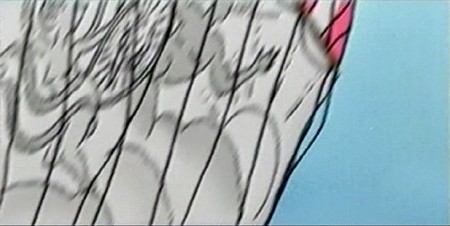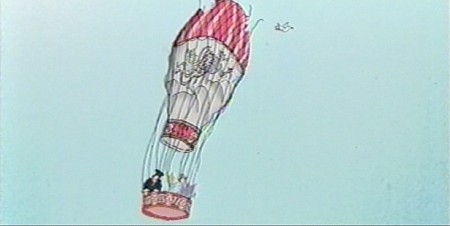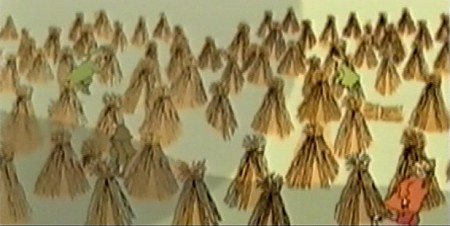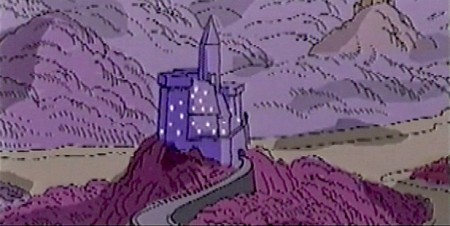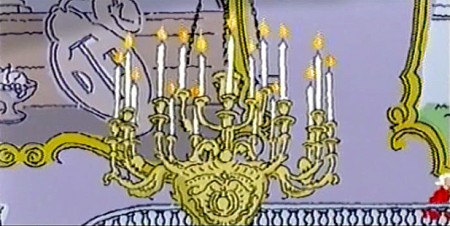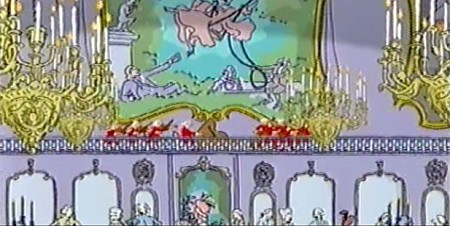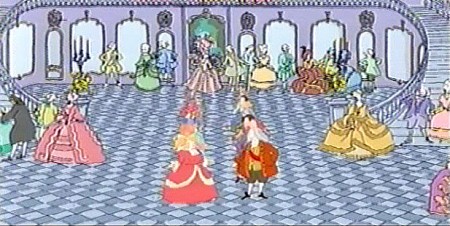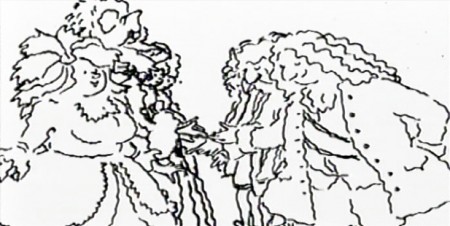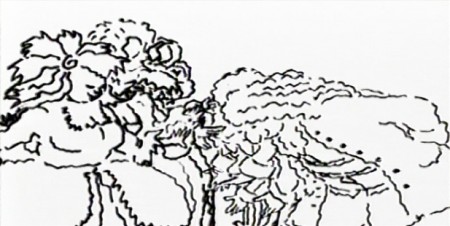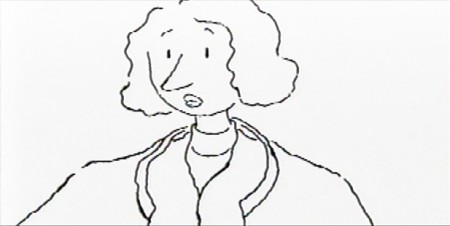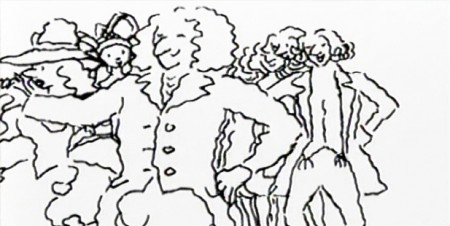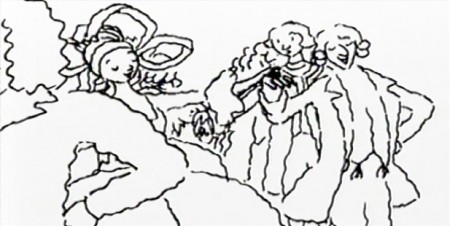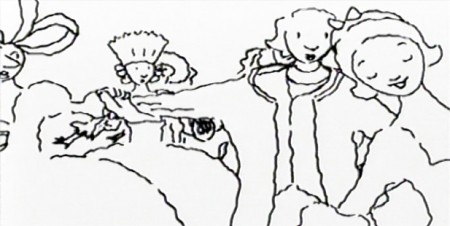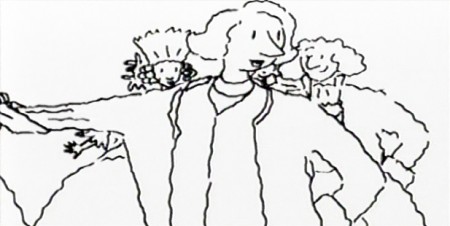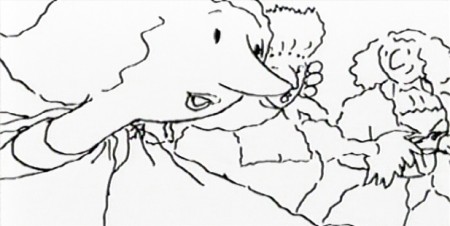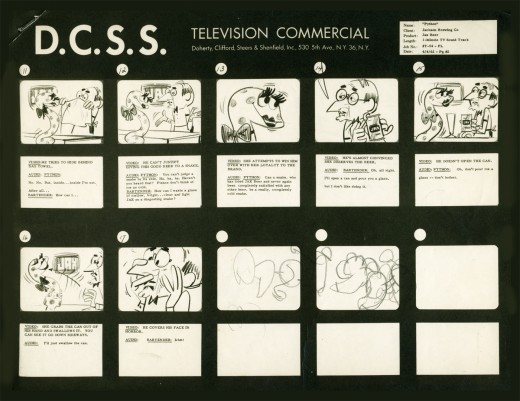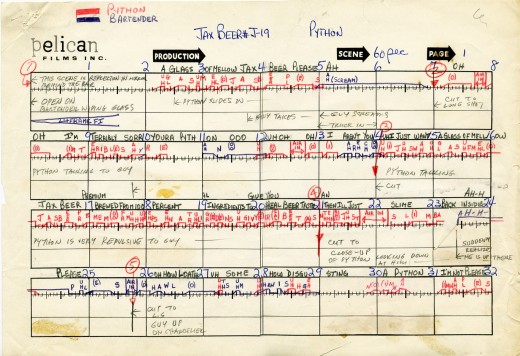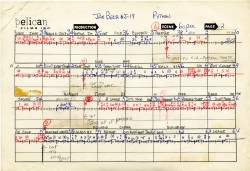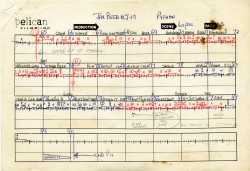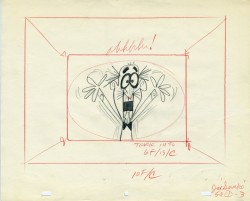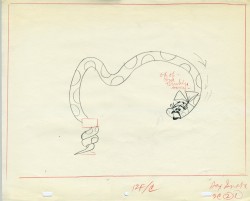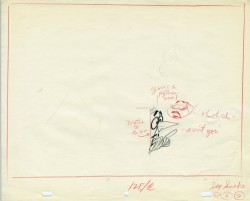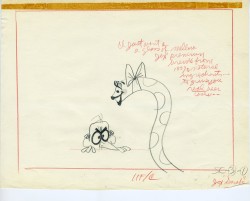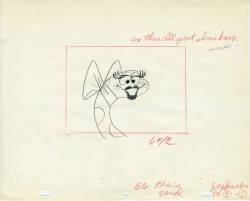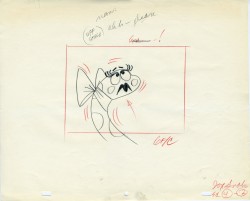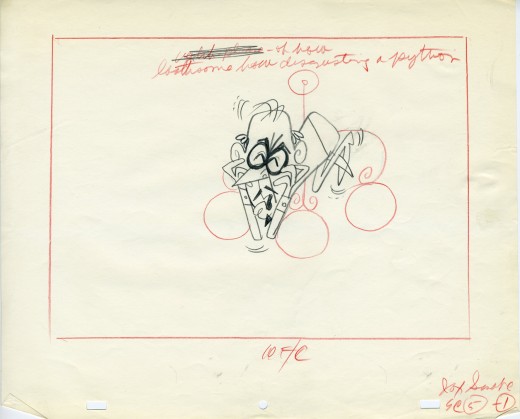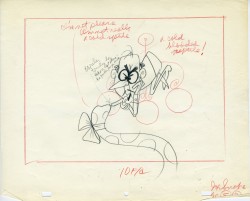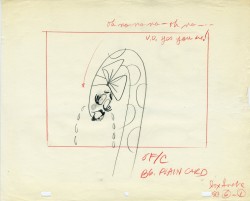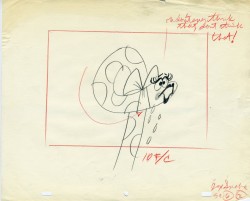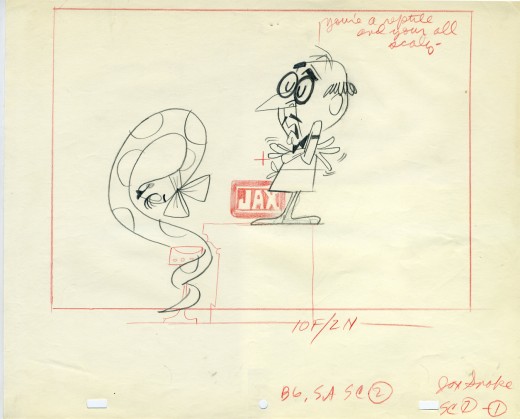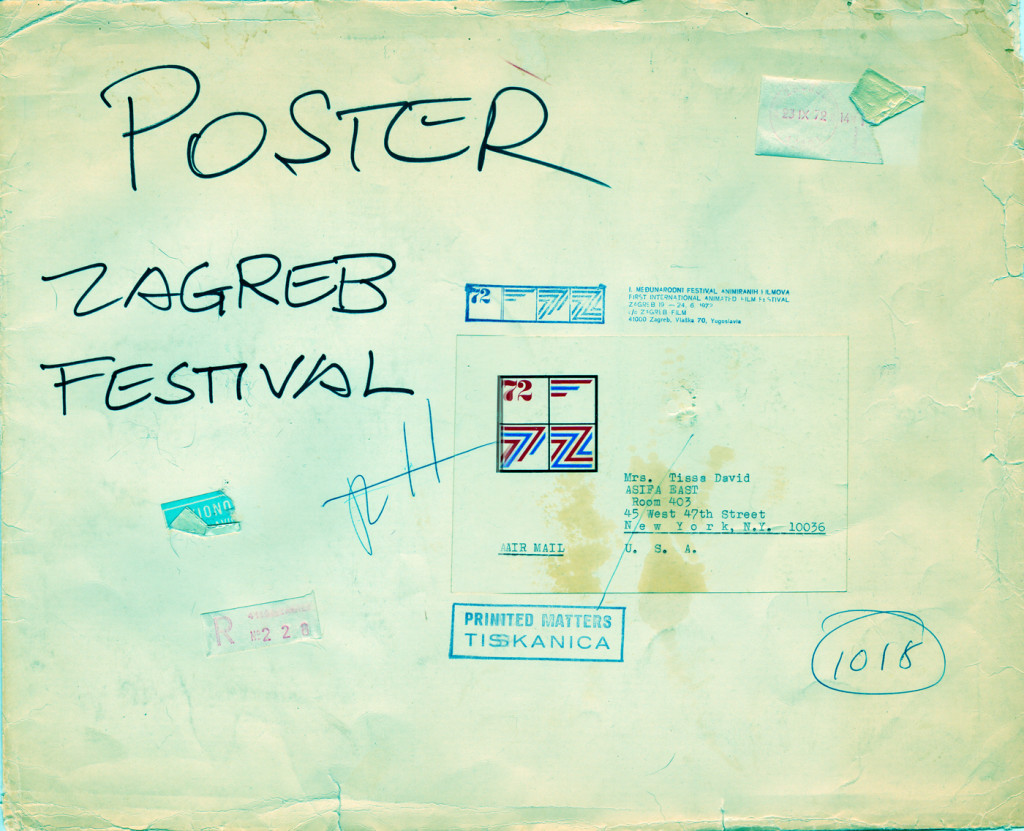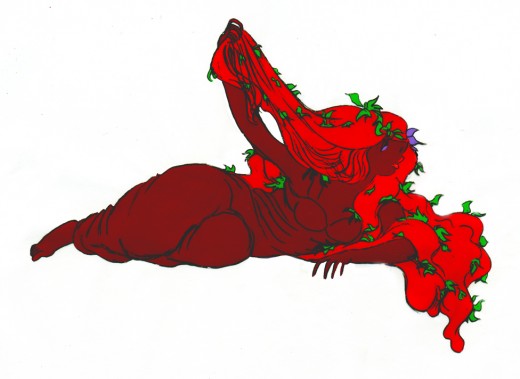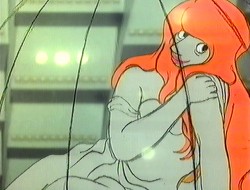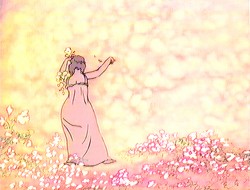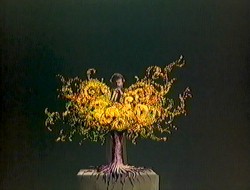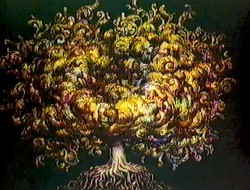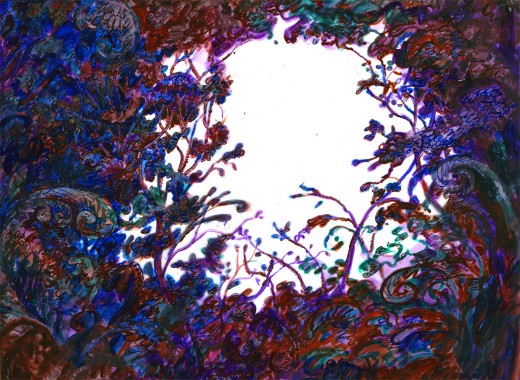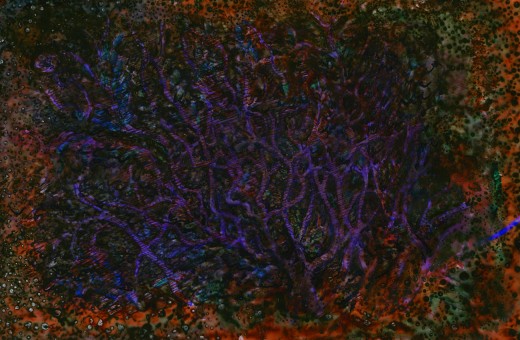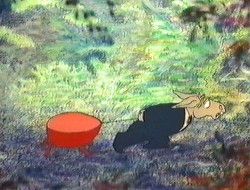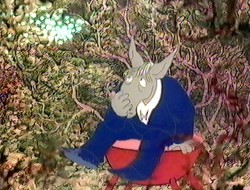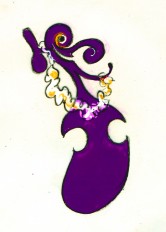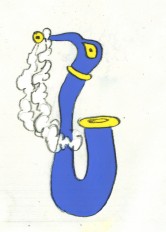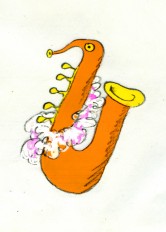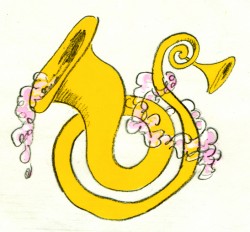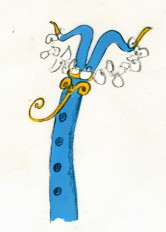Search ResultsFor "tissa david"
Daily post 07 Feb 2015 05:00 pm
Animation Day of Rememberance for Michael Sporn
Today in Hollywood, Tom Sito and Yvette Kaplan will represent Michael at the Animation Day of Remembrance. Tom and Michael go all the way back to 1976 and Raggedy Ann. Yvette met Michael at The Hubley Studio here in NYC. I have requested that they include Ray Kosarin’s superlative memorial to Michael and his studio. It was written by Ray for Michael’s Memorial Celebration at the AMPAS Lighthouse screening room on March 31, 2014. Tom asked me if he could use the Michael’s rendering of the mouse, Abel, talking to The Star from Abel’s Island by William Steig for the program cover. I said, “Absolutely!” Both Tom and Yvette will be speaking. Michael would have been very pleased to be represented by such artists and friends. Tom will be sending some pics of the event that I will post later.
The image of Michael animating is by the great Tissa David. This image is one panel from a storyboard birthday card she drew for him in 1999 celebrating how they met at the Hubley Studio in 1972.
Ray’s memorial and Michael’s rendering of Abel are posted below. If you look closely at Abel’s eyes, you will see Michael.
Heidi
31 March 2014
Ray Kosarin
MICHAEL SPORN MEMORIAL
What Animation Should Be:
On Working with Michael
Michael was an extraordinary artist and his studio was an extraordinary place. And the two or three generations of animation artists, like me, who worked with Michael remain to this day something of an extended family. A great many of us admired Michael, learned from him and were, often importantly, influenced by him. This influence, along with Michael’s remarkable body of work, is a vital part of his legacy.
What makes Michael’s films as distinctive—and as good—as they are comes from who he was: from what mattered to Michael, in art of any kind, and his convictions about what animation was. His studio was something like a repertory company of artists he trusted, and from whom he coaxed the work he wanted. And the way did was rare and exciting.
When you worked for Michael, he invested you in what mattered to him. He shared films and art of all kinds he thought were good; he made clear (at times brutally) what he did not; and he demonstrated by his own example, continually infusing you with his ethos of what animation should be. Figuring out what to do about it was your problem. And you felt determined to get it right.
In this way, Michael’s direction was both firm and, thrillingly, open-minded. He’d hand out full sequences, casting animators according to their sensibilities, and if you wanted to do a particular sequence, he almost always made sure you got it, trusting there was probably a good reason it spoke to you. He seldom gave too-specific directions, preferring to watch where your instincts carried the scene.
This made for a studio atmosphere of personal responsibility and shared purpose. Your work had better be good, but not conspicuous about it. When busy on a production, Michael moved swiftly and spoke little, which sharpened you to the small but critical signals whether you were giving him what he wanted. When OK’ing a line test of a scene you’d just animated, he might enigmatically say, “It moves,†then get on with something else. But when you gave him something he really liked, he’d usually just say, “Great.†At least you were pretty sure that’s what he said. But he said it quickly, while already striding away toward his desk: there was other work to do. When the studio was humming, it felt like a large family, all cooking dinner.
Without a doubt, the quality Michael most prized, both in the work he admired and the work he made, was economy.
Michael is somewhat legendary for the small budgets with which he made most of his films. As his good friend, animation historian Michael Barrier—who’s with us tonight—wrote: “Michael’s genius, and his curse, was that he could do so much with such tiny budgets. I will never cease to wonder what he might have accomplished with the money that always seems to be available to people with only a fraction of his talent and none of his integrity.â€
Yet it would also be a mistake to think that the economy in Michael’s films was strictly about money. In fact, something much more important was going on—something about artistic morality.
Always Michael was drawn to artists who did powerful work with conspicuously minimalist means: painters like Paul Klee, composers like John Adams. Michael often played in the studio minimalist music by Adams, or Philip Glass—music balanced so precisely that, after many bars reiterating the same arpeggio, one note’s climbing a semitone became an epic event. Minimalism was no apology for limited means: it was an expression of artistic purity—a virtuosic display of an artist in peak control of his powers.
So Michael drove you to do much with little. He goaded you by example, dropping valuable hints through his running commentary on his own work. He might, after pencil-testing a scene, triumphantly shout, “Ten drawings!†and then do his pirate laugh.
But through it all was an unmistakable higher purpose. The leaner your animation got, the more focused—a quest for the sweet spot where the interval between one drawing and the next, as with the minimalist composers, became the richest possible event. You were not cheating the audience out of drawings: you were showing them the respect not to squander on them drawings that only smoothed, but did not tell.
It worked wonders. It forced you to work smarter. And, low budgets or not, the films stubbornly won Emmys, ACE Awards, festival prizes, endless critical praise.
All of us who were lucky to work with Michael have of course had our own experiences. And yet our shared experience working with him, as we always remember when our paths cross today, importantly shaped and strengthened us all—as artists and individuals. The vocabulary Michael shared with us for how to know and make good work, to this day, coaxes us to do better, even on projects Michael might not have deemed worthy. Michael’s habit of dogged perseverance reminds us of our own reserve. And stubbornly alive in all of us are Michael’s sharp eye and infallible taste. This is Michael’s living—and loyal— legacy.
Who could wish one any better?
Ray Kosarin
Articles on Animation &Commentary &Frame Grabs 07 Sep 2013 02:24 am
Saturday Comments Live
Well, today’s Saturday, and I actually have a realio trulio live blog post for the day. We were able to get Verizon in to trip over their own shoelaces and figure out what was causing our phone problems. But they came through with blazing colors, and here we go again. Now I hope we can, at least, make it through the next week without having to shut down again.
More on St. Louis
I received a surprise check this week from the St. Louis Animation Film Festival.
 Maybe you’ll remember that we had to leave St. Louis in the middle of the night. Because of some enormous pain I was getting from an operation I’d had in NY, just the week before, doctors had to retrace their steps. The Festival felt that they should cover any overage costs that it took to get me into NY and onto Beth Israel’s operating table. The Festival folk couldn’t have been more generous. I was embarrassed just to have to pull out the way I did. They made it more than alright by covering extra travel costs that caught me unawares
Maybe you’ll remember that we had to leave St. Louis in the middle of the night. Because of some enormous pain I was getting from an operation I’d had in NY, just the week before, doctors had to retrace their steps. The Festival felt that they should cover any overage costs that it took to get me into NY and onto Beth Israel’s operating table. The Festival folk couldn’t have been more generous. I was embarrassed just to have to pull out the way I did. They made it more than alright by covering extra travel costs that caught me unawares
The award was made especially for me. and had just gone out via FedEx. The award celebrates my career with by illustrating my in-production film. Illustrated by a local talent, it depicts Vincent Price in the E.A.Poe position lookin’ over me. My new guardian angel will be looking out for me from my office wall. It’s working guys; it’s working.
The film isn’t even finished yet, and already it has an Award. Thanks to you.
Cliff Froehlich and the rest of his staff are first class people, I can guarantee that! Thank you Cliff and anyone else involved.
The commercial for “Christian Mingle” animation looks like it was pulled from the 60′s animated short, Nathan A]exander Davidson and his wife, done at their company, Zone One Oni Designs.
Christian Mingles lasts less than 20 secs whereas Cosmic Cartoon lasted almost 20. Both use lots of hand-done air brushing done on top of cels and photographed traditionally. At least, I know that’s how Cosmic Cartoon was done; you can’t really tell with the Christian dating service ad. One presumes they’re now using a computer for artwork and effects. Regardless, it’s a top-rate spot.
I’m sure the full film is out there somewhere on YouTube.
If Fred Ladd, John Lisberger or anyone else connected with the film want to give us more info, I’d love to see it in the comment section.
The same is true of Nathan Alexander Davidson. Tell us what you’re up to now. Any more such spots in the works?
I still haven’t gotten over the retirement of Hayao Miyazaki this past week. There are very few animation directors, historically, that I can think of whose influence was as far reaching and key to the art of the medium. There are enough live action film makers whose work was consistent and moving over a consistent number of themes. John Ford, Alfred Hitchcock, Howard Hawks and George Cukor
I’ll talk about this at length in the upcoming posts. The director’s influence has been too great on me to not pay great attention. (It’s at a time like this that I wish the late, great Tissa David were still around so that we could recap our thoughts with each other.)
Animation &Animation Artifacts &Commentary &commercial animation &SpornFilms &Tissa David 26 Aug 2013 08:54 am
Garbo Talks through Tissa’s Drawings
To celebrate Tissa David‘s last days, Ive chosen this title sequence she did for Garbo Talks. Her anmation is beautiful for it, and I enjoy looking at the film which has yet to be released on DVD.
The initial rough/cut screening for Garbo Talks was a bit peculiar. I sat down and a woman sat next to me; I sort of recognized her. We said hello when she sat down. Somewhere midway during the film I realized who the woman was – Betty Comden, that half of the Comden & Green writing team. I realized she was playing the part of the older Greta Garbo in the film, without receiving credit. It was brilliant casting, but you could say that about all of Sidney Lumet’s movies.
When I left the screening room there was a tense meeting going on with four people. I caught Sidney’s eye and waved goodbye. Going down in the elevator Burtt Harris, the producer, rushed in as the doors were closing. He asked what I thought of the film. Before I answered he said it wasn’t working, and Elliott Kastner and MGM weren’t very happy. A rough conversation in an elevator.
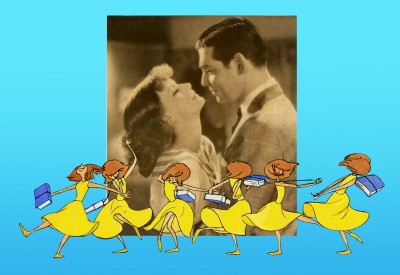
The next day, Sidney asked what I thought of the film, I said that I felt we didn’t know enough of the back story of the Ann Bancroft character in the film. I suggested that I try to offer this in the opening credit sequence. Sidney loved the idea. He just made me promise that it wouldn’t feel like the credits to “I Love Lucy” or “I Dream of Jeannie.”
During the mix, we were talking about the music for Garbo Talks when we slipped off into discussing the music for some of Sidney’s other films. I told him that the music by Richard Rodney Bennet for Murder on the Orient Express was one of the most brilliant film scores ever done. Sidney hesitated in responding finally saying he didn’t get it at first, and it took a while for him to appreciate the music for that film. Sidney wasn’t always perfect in selecting a composer for his films, although I do think that Johnny Mandel was a great choice for him on Deathtrap and The Verdict (or any film, actually).
Bob James had scored Garbo Talks. (He is an eminent jazz pianist, whose most famous piece is probably the theme to the tv show, Taxi.) Bob and I had to work together very closely. He wrote the score to the animatic I’d given him and would build the rest of the film’s score from that. He hit many of the actions in that opening title, and Tissa David‘s animation hit them all. There was a very tight sync between music and title animation.
The preview screening was held on Long Island. I drove there and met the group of Sidney, editors and MGM execs, including Elliott Kastner. He was the leading producer on the film. They weren’t happy at the end of the screening, and I was sure my titles were going to go. It took a week to hear that the titles were staying, but the score by Bob James was dropped. The composer took the hit, unfairly. A new score was being written by Cy Coleman. All that tight sync work!
Coleman wrote a lovely melody for the film, but just swept across the animation not hitting any points in particular. It’s taken me a long time, but I’ve come to like the music he wrote. Tissa wouldn’t watch the piece again with the new music.
In the film, the character played by Ann Bancroft has had a life that, in some small way, was shaped by Greta Garbo’s feature films. This is a small bit of backstory in the live action film, until the end.
For the credits, I chose to develop this aspect of her story, and Sidney agreed on the approach. We told her life in a caricature of Ann Bancroft‘s character, growing up. The sequence ends with her at her current age, an elderly woman, and the live action begins. Hence, we were giving the life story of the film’s lead character before the film started.
The idea was to use the device that had been developed for TV in the 50′s & 60′s of the caricatured characters whisking through the sitcom titles. (See Bewitched or The Carol Burnett Show.) However, it was our intent to treat it in a serious way.
Tissa David did a stunning, tour de force of a brilliant piece of animation. It was a dance that the character went through, and the credits played off the animation, which played off stills of Greta Garbo’s films.
There was a small crew on the piece, which ran about 2 ½ minutes. Tissa animated, I did whatever clean up was left. Robert Marianetti single-handedly colored everything; Janet Benn and Christine O’Neill did additional I&P. Gary Becker filmed it, and Edith Hustead edited.
.
.
Tissa had about two weeks to animate about 2½ mins. of animation. I begged her to leave inbetweens for me, which she did, though only on close positions. I inked on paper, and Robert Marianetti colored directly from these rough-ish drawings. It was done with prismacolor pencils on paper. The paper drawings were then cut out and pasted to cels.
.
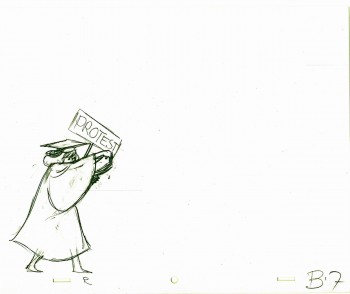 7
7
(Click any image to enlarge.)
Below is a rough PT of the piece with its staccato rhythm since it’s missing inbetweens.
Garbo Talks ruff PT On twos at 24FPS
Click left side of the black bar to play.
Right side to watch single frame.
The entire title sequence.
Thanks to Roger79 for uploading it.
Thanks to Stephen MacQuignon for finding it.
Action Analysis &Animation &Animation Artifacts &Commentary &Hubley &repeated posts &walk cycle 02 Aug 2013 04:29 am
Marky’s Walk, cycled
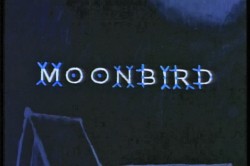 - If I had to choose who was my favorite animator, I’d have a tough time. Equal credit would probably have to go to three different people: Bobe Cannon, Tissa David and Bill Tytla. Jim Tyer and Ed Smith would fall just a smidgen below these three, for me. But there are none like them all, as far as I’m concerned.
- If I had to choose who was my favorite animator, I’d have a tough time. Equal credit would probably have to go to three different people: Bobe Cannon, Tissa David and Bill Tytla. Jim Tyer and Ed Smith would fall just a smidgen below these three, for me. But there are none like them all, as far as I’m concerned.
I’ve posted a lot of drawings from Tissa and Bill Tytla, but have very few drawings by Bobe Cannon (nor have I seen many published anywhere.)
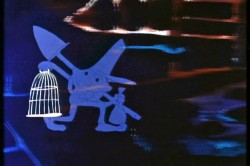 Here is a walk cycle from the beginning of Hubley’s monumental short, Moonbird. The odd numbers are extremes by Cannon, and the inbetweens (even numbers) were done by Ed Smith. Three different sized papers were used for this, and you can view them full sized if you click the thumbnails.
Here is a walk cycle from the beginning of Hubley’s monumental short, Moonbird. The odd numbers are extremes by Cannon, and the inbetweens (even numbers) were done by Ed Smith. Three different sized papers were used for this, and you can view them full sized if you click the thumbnails.
You’ll notice there’s paint all over the drawings. The ink & paint involved tracing the drawing, then using oil paints to cover all of the clear area in black. Some of that paint seeped onto the originals. In one drawing even to coloring the hat accidentally.
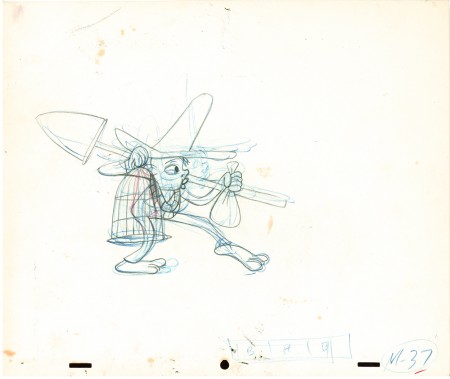 37
37(Click any image to enlarge.) “Marky” walk cycle from Moonbird
On twos at 24FPS
Click left side of the black bar to play.
Right side to watch single frame.
There’s a lot more to this scene including several variants on the walk.
At some future time, I’ll add the other drawings to show off the entire scene.
Daily post 25 Jul 2013 08:45 am
Candide 1
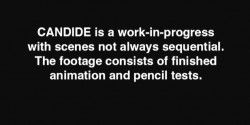 - For some time, after Bob Blechman completed his PBS special, A Soldier’s Tale, he tried to develop several ideas as animated features. He worked hard to produce some exquisite animated samples for potential projects.
- For some time, after Bob Blechman completed his PBS special, A Soldier’s Tale, he tried to develop several ideas as animated features. He worked hard to produce some exquisite animated samples for potential projects.
Candide was one that took the most energy and a fine piece of film was produced to showcase what he and his studio would do with this famous tale. Unfortunately, there were no takers, and this project was shelved along with some other classic ideas.
For this pilot, about ten mins. long, Tissa David and Ed Smith did most of the animation – Tissa took the lion’s share of the piece.
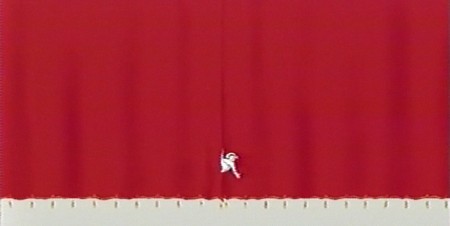 1
1.
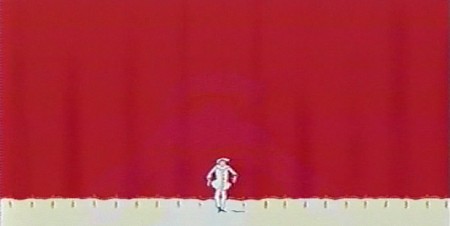 2
2I have a copy of the pilot and thought it’d be worth posting some of the frame grabs from the piece to give you an idea of it. The entire film uses lengthy scenes and fluidly moving camera – no doubt an addition of Tissa David’s work. As the title card reads, these sequences aren’t presented to tell a story; they’re designed to highlight the animated fare.
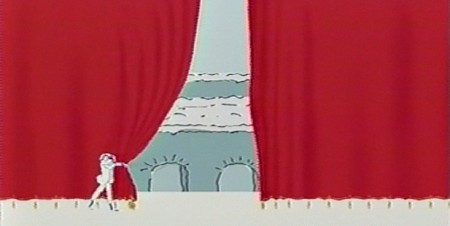 3
3(Click any image to enlarge.)
.
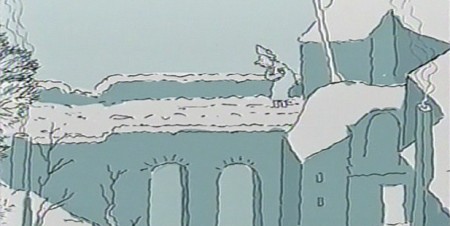 4
4.
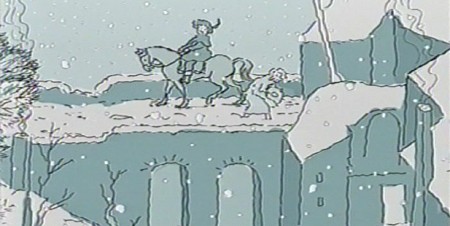 5
5.
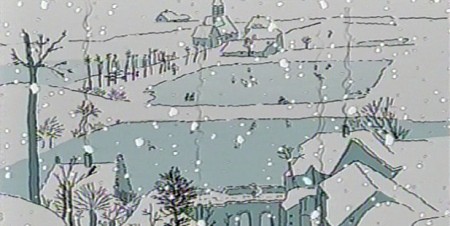 6
6.
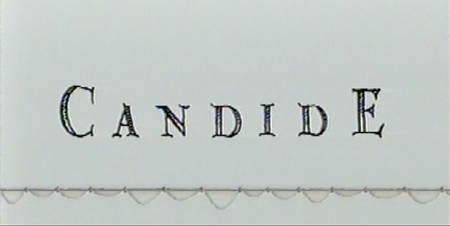 7
7The title acts like a theatrical canvas wherein . . .
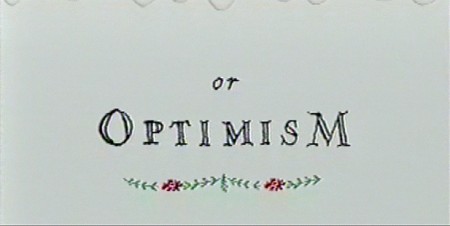 8
8
. . . one, “Optimism”, overrides the other, “Candide”.
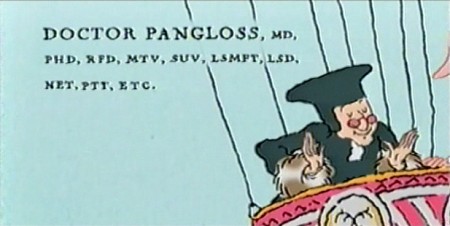 13
13
Theatrically, all of the characters are introduced in CU cards.
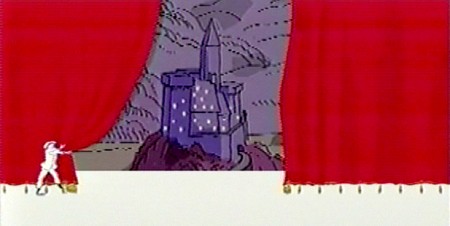 24
24
Part II is introduced with another opened curtain.
More to come, soon.
Animation &Animation Artifacts &Commentary &commercial animation &Models &repeated posts 13 Jun 2013 09:07 am
Jax Beer – recap
- In November 2006 I posted the storyboard, workbook and final layouts for a Jax Beer spot which was directed by Mordicai Gerstein. I thought it interesting enough to recap the two posts, so here they are.
- This is the material for a Jax Beer commercial. It was done by a NY studio named Pelican in 1962. There were about 75 people on staff at Pelican back then.
This spot was directed by Mordi (Mordicai) Gerstein. He left animation in th 70′s to write & illustrate children’s books. (He won the Caldecott Medal for his book, The Man Who Walked Between The Towers. This was the book I adapted to animation in 2005.)
What follows is the storyboard and the director’s workbook. (It appears to be an agency board, though it’s drawn in a style that looks to be Mordi Gerstein‘s. Perhaps boards from the agency were drawn by the studios back in 1964; I’m not sure. The layouts were drawn by the same artist.)
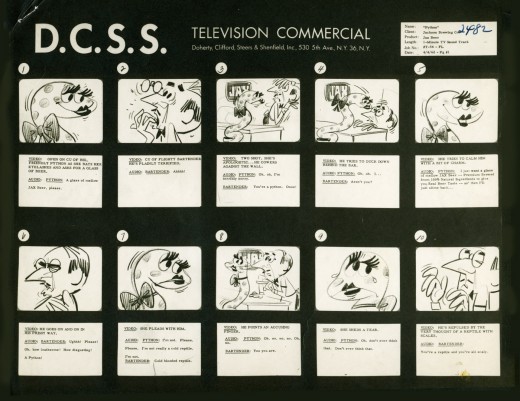
_____(Click any image to enlarge.)
The workbook has several flaps on it that indicate changes in timings. There are also glue stains where I assume other flaps fell off. (See page one, last row, first column.) Each column represents 16 frames/one foot of film. Odd numbers are marked off.
Each row contains 8 feet of film/128 frames. Each page represents 32 feet/512 frames. It would have been smarter to keep to even numbers.
More modern exposure sheets generally have 80 frames/five feet per page. This also divides into two feet of 16mm film. (Handy.) The numbers add and divide smartly and easily. But then most people don’t use exposure sheets anymore.
 - Continuing with the above post, a Jax Beer commercial, I present some of the film’s layouts. This represents about 2/3 of them.
- Continuing with the above post, a Jax Beer commercial, I present some of the film’s layouts. This represents about 2/3 of them.
The art was done by Mordi (Mordicai) Gerstein, who also directed the spot. Grim Natwick animated the spot and Tissa David assisted him. Of course, this was in the days before auido tapes could be handed out, so the animator would get a phonograph of the soundtrack. They could mark it with a white pencil to indicate key spots.
I thought that this in conjunction with yesterday’s prep material gave a good indication of the preproduction that went into making a commercial back in 1962.
That said, here are the layouts:
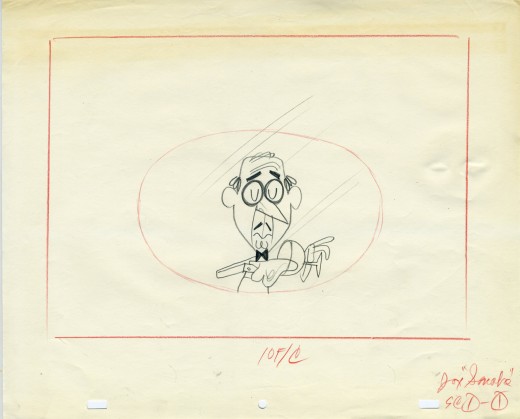
(Click on any image to enlarge.)
Festivals 04 Jun 2013 04:24 am
Zagreb
The Zagreb Animation Festival, now called Animafest, the 23rd World Festival of Animated Film, starts June 4th through 9th.
One of the last artifacts Tissa David gave me was an invitation poster from the 1st Zagreb Festival. I thought it’d be a good idea to post that today to coincide with the Festivl’s opening. All those going there, have fun and good luck.
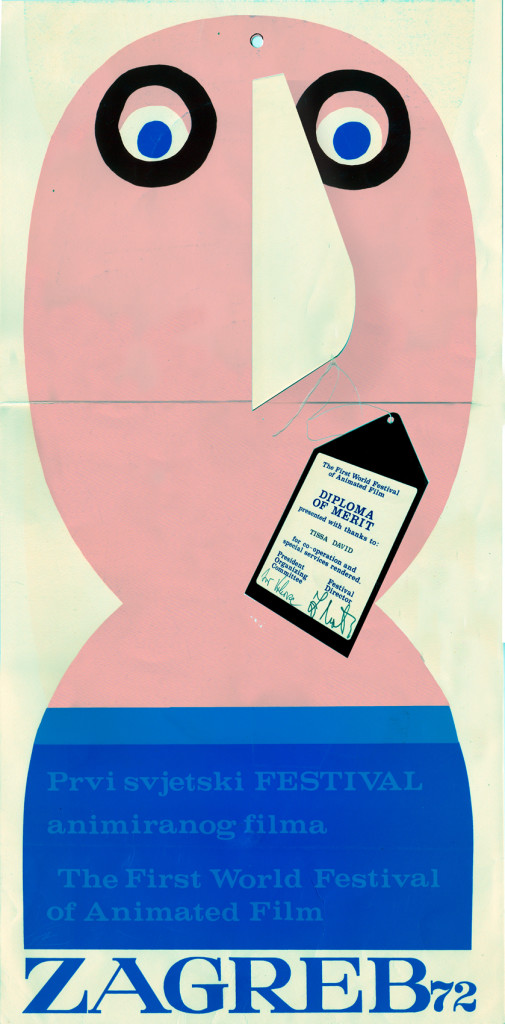
The initial poster for the first Zagreb poster.
The nose is taped on and stands up, as in a pop-up book.
The tag is connected by thin, light string.
Animation &Animation Artifacts &Commentary &Independent Animation 21 May 2013 05:11 am
Tissa’s Nidsummer Night Dream
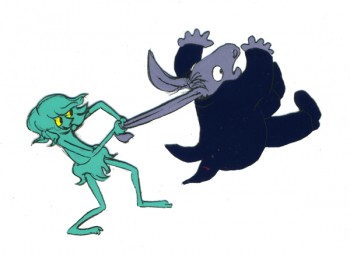 - From 1983-85, Tissa David teamed with three other friends in Holland to begin work on an animated version of Mendelssohn’s Midsummer’s Night Dream.
- From 1983-85, Tissa David teamed with three other friends in Holland to begin work on an animated version of Mendelssohn’s Midsummer’s Night Dream.
This film would introduce several animated characters from Shakespeare’s play over a live action orchestral performance of Mendolssohn’s music. These characters chased each other around the orchestra until, eventually, the animation took over, and the orchestra melted away. The tympanist, himself, melded into Bottom.
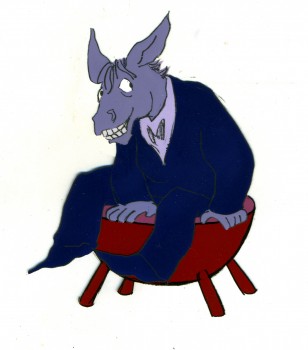 This film was completely animated by Tissa, including all inbetweens and layouts. She was the film’s director, though in all the time she worked on this film, she never once described her role to me as such. She was just making a film she loved with several extraordinarily talented friends.
This film was completely animated by Tissa, including all inbetweens and layouts. She was the film’s director, though in all the time she worked on this film, she never once described her role to me as such. She was just making a film she loved with several extraordinarily talented friends.
Kalman Kozelka was a brilliant cameraman who shot the entire film in a home built multiplane camera. It’s unjust to call it simply photography, because every scene involved seven to ten exposures with mattes and special lighting. Half of the scenes combined live action with the animation, and all of the scenes involved multiple levels with back and front lighting.
Ida Kozelka-Mocsary, Kalman’s wife, designed all the character coloring and colored all the cels . She worked closely in helping Kalman to prepare everything for the photography including mattes.
Richard Fehsl was the brilliant designer who colored and, in many cases, animated the Bg’s. All of these Bg’s were painted with dyes on frosted cels under rather delicate inking.
All four took story credit.
I have a good handful of the overlarge cels and artwork from the film. Here are a few of those cels along with a number of representative frame grabs from the film.
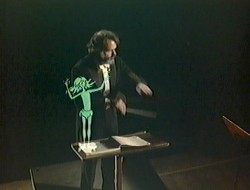 __
__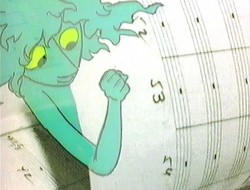
__________________(Click any image to enlarge.)
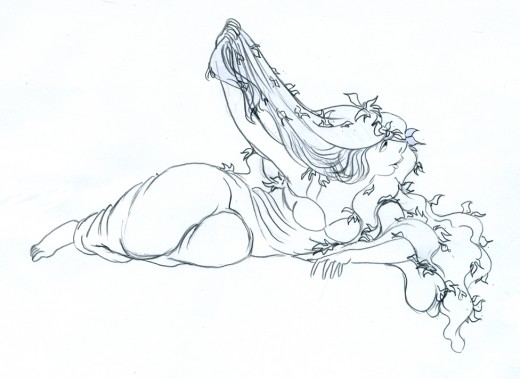
__________________Titania, the drawing and the cel.
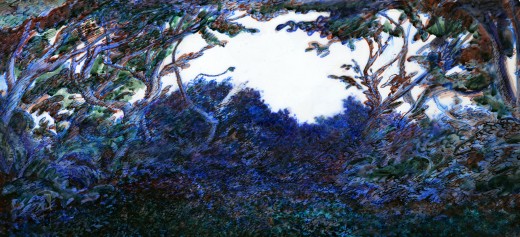
__________________Three of Richard Fehsl’s Bg elements. These were back lit
__________________and front lit and combined with other Bg levels.
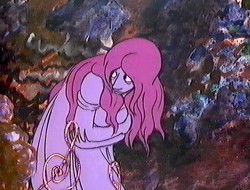 __
__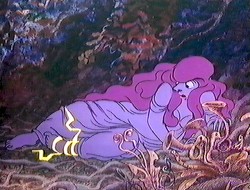
At times, Fehsl’s Backgrounds animated.
___I have so much more art from this film, that there’ll surely be more posts to come.
This video (vhs) can still be located – used copies – on Amazon here.
The film features a live-action orchestra with Shakespeare’s characters running wild over the footage. Eventually, the picture opens to an animated woods. It was photographed by Kalman Kozelka, color styled by Ida Kozelka-Mocsary, and Bg designs by Richard Fehsl.
The film aired on the BBC in 1983 and was released on VHS by Goodtimes Video.
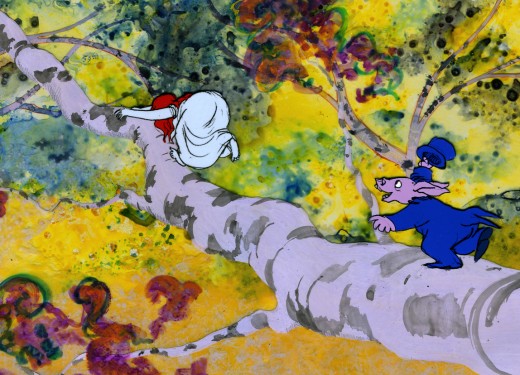
(click any image to enlarge.)
Bottom chases Titania in the woods.
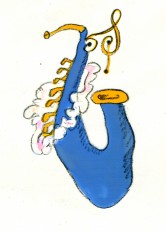
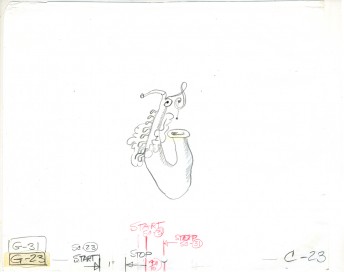
At one point the instruments of the orchestra take on an animated life of their own.
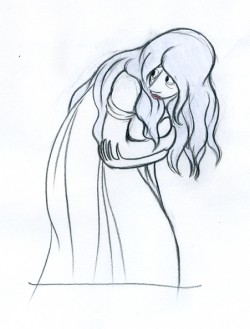
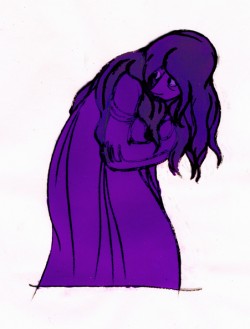
The dark coloring loses some of the emotional delicacy of the drawing,
but is appropriate within the context of the film.
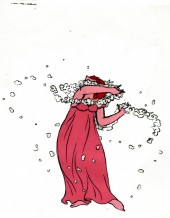
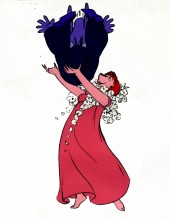
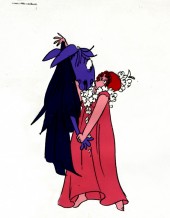
Titania catches Bottom in her arms.
Three cels from a sequence.
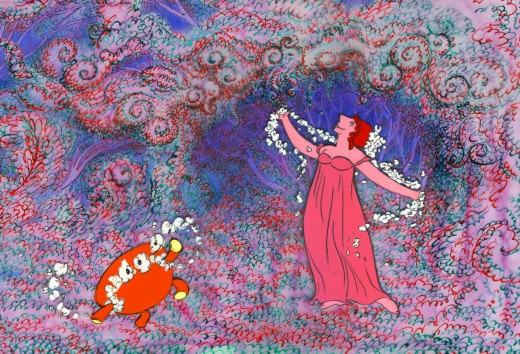
Titania dances with Bottom’s stool. (He’s brought it into the woods
when he transformed from the tympanist to the animated character.)
John Canemaker &Layout & Design &Models &Photos &Rowland B. Wilson 05 May 2013 05:55 am
More Raggedy Ann Photos – 2
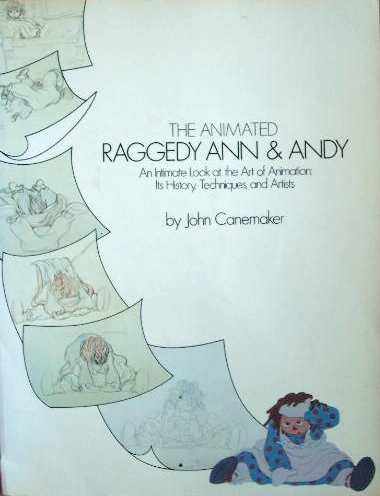 - Last week, I posted a stash of photos taken by John Canemaker for the book he wrote called, “The Animated Raggedy Ann and Andy.”
- Last week, I posted a stash of photos taken by John Canemaker for the book he wrote called, “The Animated Raggedy Ann and Andy.”
John Canemaker took all the photos, himself, which led to a more intimate look at an animated film. There were no photo decisions by committee; it was decided to use a photo if it told the story John was trying to relay. For that reason, the book really is one of the best “Art of . . .” type books on the market. (I’m not just saying that because there were photos of me in there – though that would be a good reason, too.)
The book was as exciting – in the making – as was the film. Too bad at the last minute the train of a film ran wildly off the tracks. In a way, I wish the book were written after the film was completed so that we could read the true story of what happened in those last six months of chaos.
The decision was slow in growing and fast when it finally fell, that the movie was enormously over budget. I was in on all the morning production meetings where managers and supervisors and directors would all meet. Those had started off nicely, at the beginning of the film, and went insanely wrong before long. There was the time when I was ordered to fire – that day – two inbetweeners. I was told that we had to give the staff a lesson that they had to work harder. (That might have been hard to do since everyone was giving it their all.) It so happened that one new inbetweener, on her first scene, ignored my instructions (and her immediate supervisor’s) by erasing all of Jack Schnerk‘s drawings. She felt she could animate the scene better, and she set out to prove that.
One down. The second person to fire was someone I was told (by Dick Williams, himself,) that I had to fire. It was obvious that there was a personality conflict since the guy was a great artist and definitely someone who should have stayed on. I was able to arrange for him to be switched to the BG department, thus fired by me from doing inbetweens and hired by them, in the same day, to do watercolors. He continues on, even today, working at a top position in design at Blue Sky. I don’t know about the woman, but I hope she gained a little humility that day 30-something years ago. That story didn’t make it into the book.
What there was in the production was a great first year of production where the art of animation was treated in its highest form. We were all out to make the greatest film of all time and bring it to the big screen. We had some of animation’s finest animators gathered to work on it. Assistants and Inbetweeners in New York were offered classes, after hours, which tried to teach animation to the new. With teachers like Tissa David and Art Babbitt and more experienced Assistants; a lot was conveyed. I was usually too busy to make it to many of these classes, but I always kept a close eye on what was taught. It really was fun and incredibly valuable to many of us.
At some point along the way, the LA studio was closed and key people from there came here. All of our space was overcrowded and uncomfortable. The Xeroxing in NY, a sweet grey line that took a while to construct, was replaced by a thick back line, when management sent work to Hanna-Barbera to outsource the xerography and some of the painting. Shadows were eliminated. Color copiers were rented. Scenes that had been animated in a non-photo blue pencil on 16 fld paper were being copied and reduced, at the same time, in B&W so that they could use 12 fld cels to color the art. A penny saved is a penny gained; I guess. This meant that a number of my inbetweeners were used to put 4 sets of crosses on the animation drawings so that there’d be some form of registration on the reduced artwork. Certainly the registration went all to hell in the process, thus allowing the latter half of the film to have a lot of slippage on the big screen. Lots of weaving animation in scenes that were rushed.
Emery Hawkins‘ amazing taffy pit took a big hit when it was animated more like a limited animation movie. All that beautiful rolling motion Emery had created on the cinemascope screen suddenly hits the wall and stasis sets in. The film was never going to be a classic of he silver screen, but it should have been a hell of a lot better.
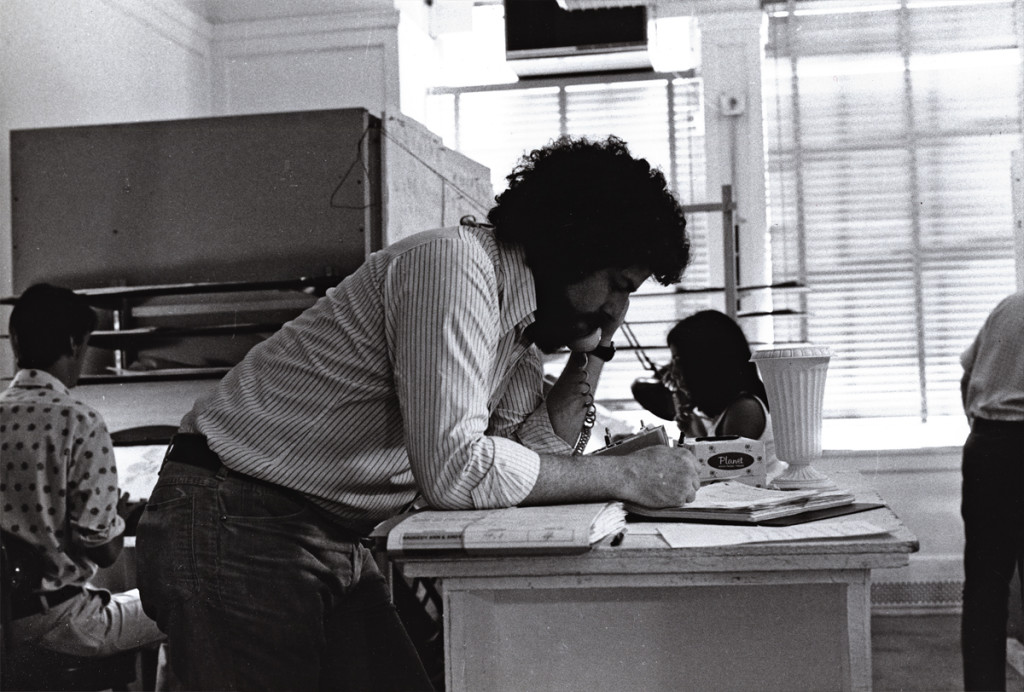 1
1Here I am doing what I did most of the day.
I talked on the phone. Ennervating stuff.
A young Kevin Petrilak is in the rear left. He was an inbetweener
in the Taffy Pit. Dan Haskett ran that group of people.
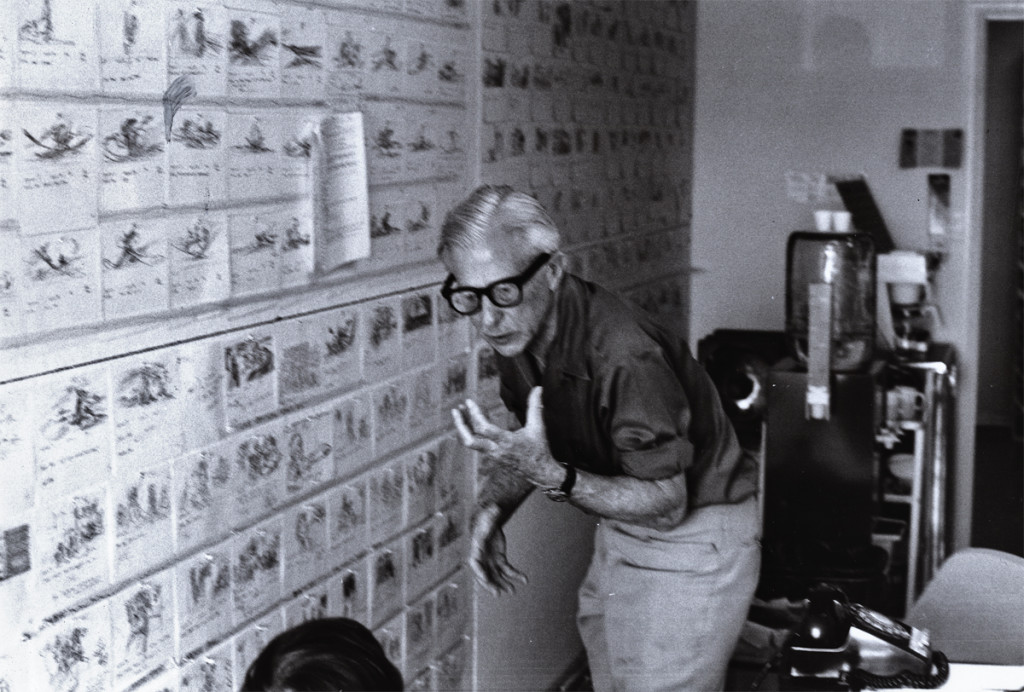 2
2
Here’s Art Babbitt teaching. He loved doing that. Dick tried to
recreate the classes he’d had in London a couple of years earlier. We – all New York -
sure appreciated the two weeks of lessons. I have Dick’s notes from these sessions.
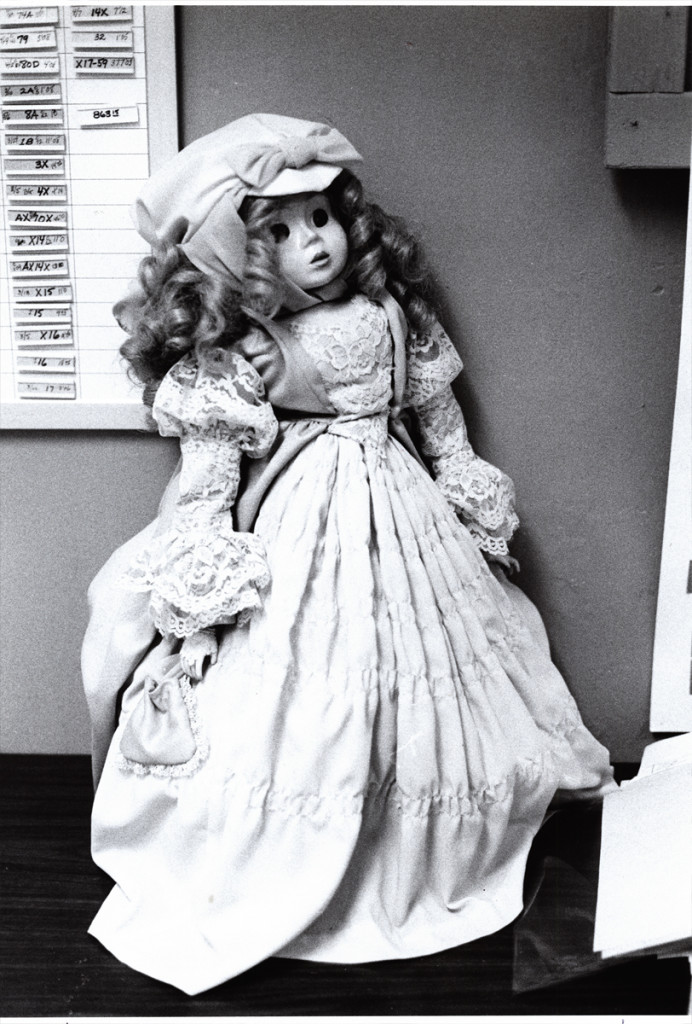 3
3
This is a beautiful doll. Babette. She was at the film’s center.
The Pirate kidnaps her and takes her to sea. Raggedy Ann & Andy
take off in pursuit of her to bring her back to the playroom.
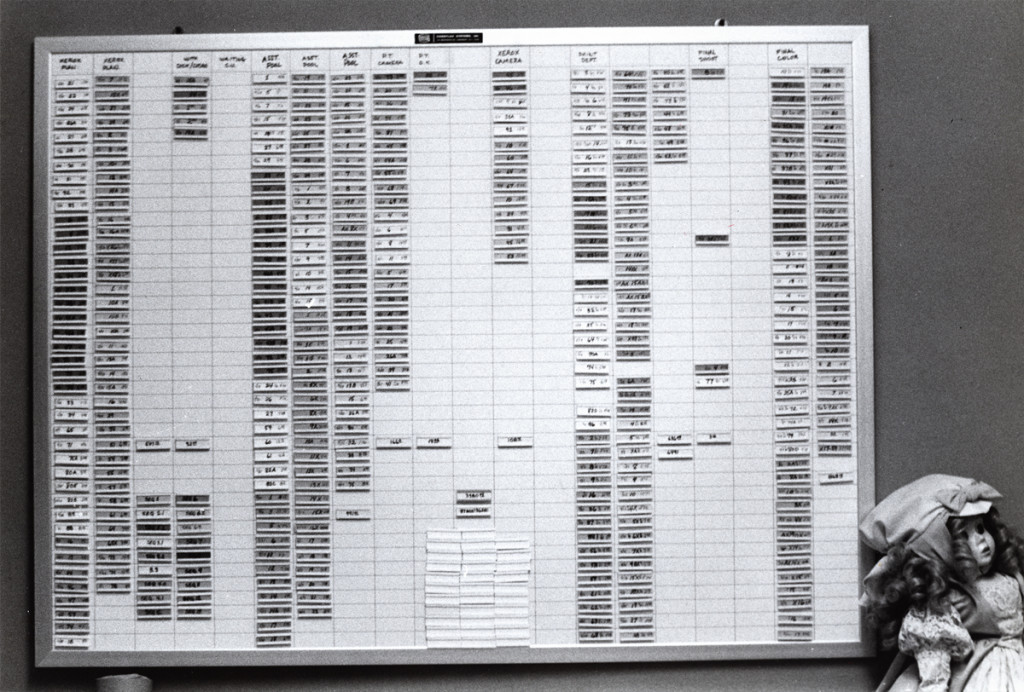 4
4
This is a wall of stats. It represents footage counts produced in
every department working on the film. This hung in Mike Sisson’s office.
He was the production manager who tried to usurp the entire production.
A couple of weeks before everything changed, managerially, on Raggedy, Sissons
approached Cosmo Anzilotti and me at lunch. He saw us at the restaurant and came
over to us. He wanted to lead a take over cutting Dick out of the film and
putting Cosmo in to finish directing the film. I’d be made Cosmo’s assistant.
I had no intentions of being another Iago, and said as much.
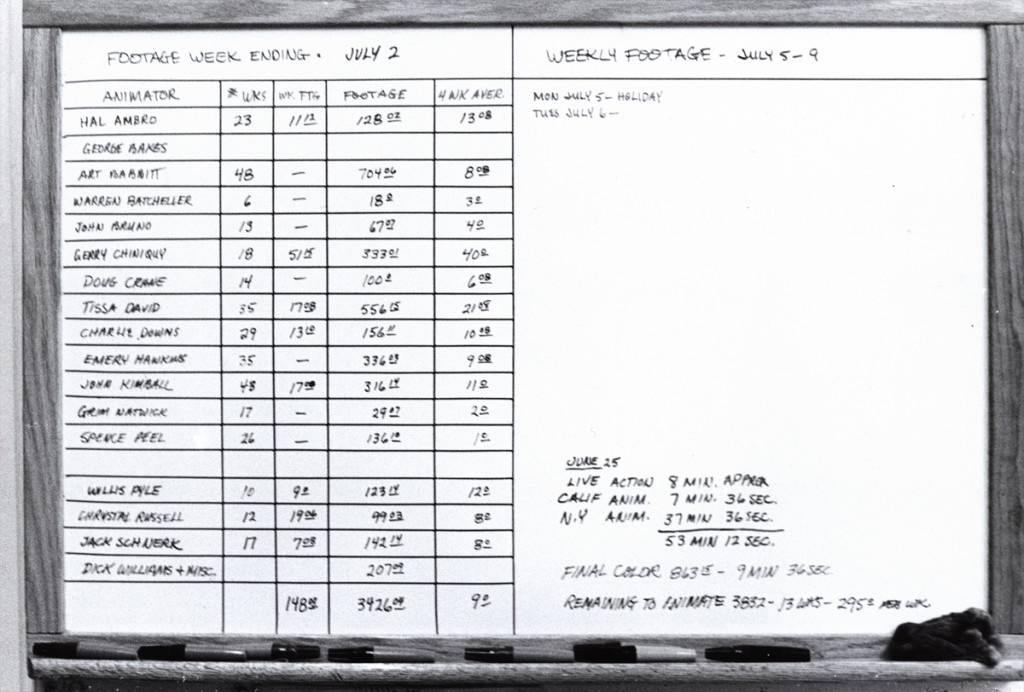 5
5
This chart covered the animators footage counts. A running record.
I told Cosmo that Dick had brought me onto the film, and I’d do anything for
him. If it meant leading a large group to quit the show, I’d do that. Cosmo
seemed relieved. He wanted to do the same and we both told Sissons how we
felt. He greeted our news with an ass’ smile and thanked us. We were no
longer on the winners’ side, and I watched closely to know when to exit.
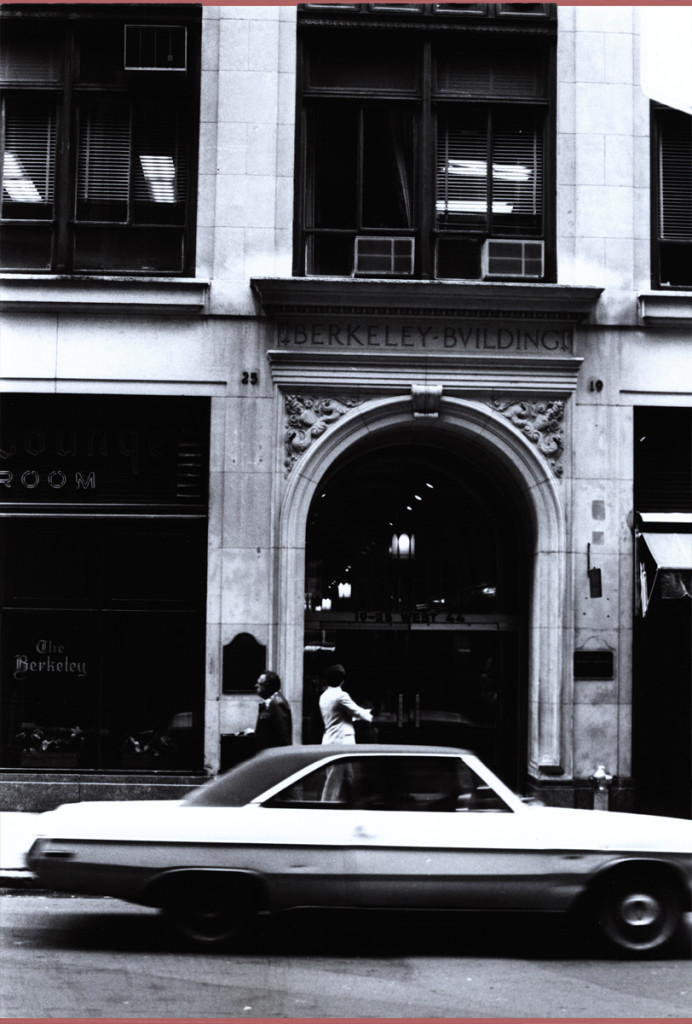 6
6
This was where the NY headquarters were planted. In the middle of 45th Street.
Most studios in the forties and fifties had places on 45th Street. Paramount,
Hal Seeger’s studio, lots of other smaller studios such as Pablo Ferro or Ray Seti’s.
![]() 7
7
Didi Conn was the actress who voice Raggedy Ann. When the VOs were coming
to an end, Didi worked late and her mother was with her. They needed help
getting home (Long Island.) The mother was afraid to drive. I volunteered
and drove them home. I took the Long Island Rail Road back to the City.
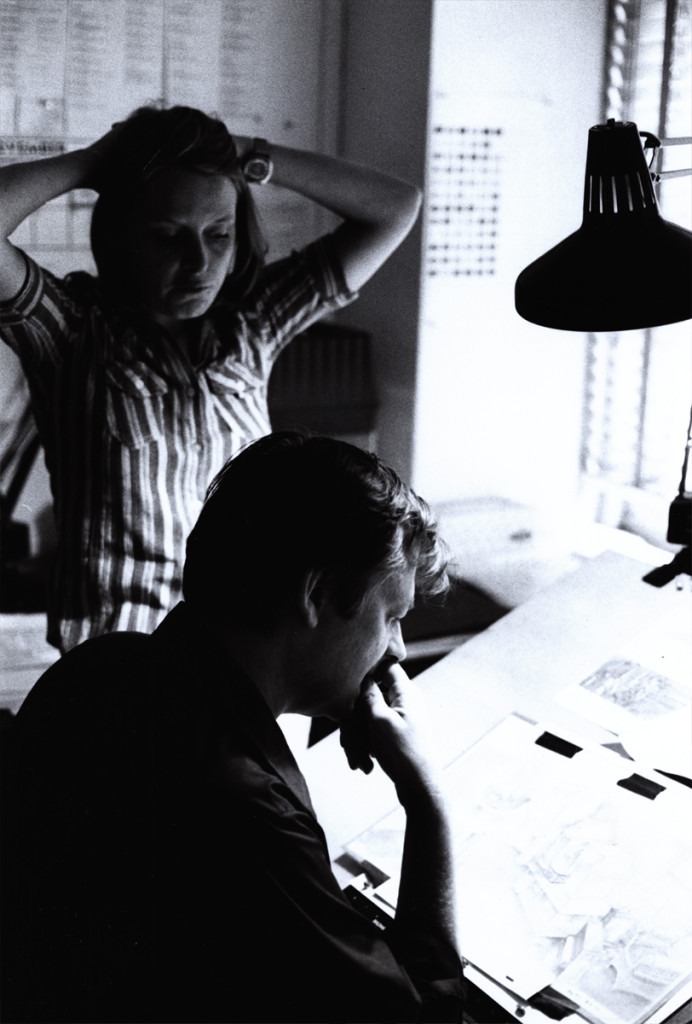 8
8
This is Sue Butterworth with Dick Williams. She was the watercolorist who
led the BG department and designed the wc style of the film. I thought her
work a bit inconsistent and often lacked the dynamic look good BGs require.
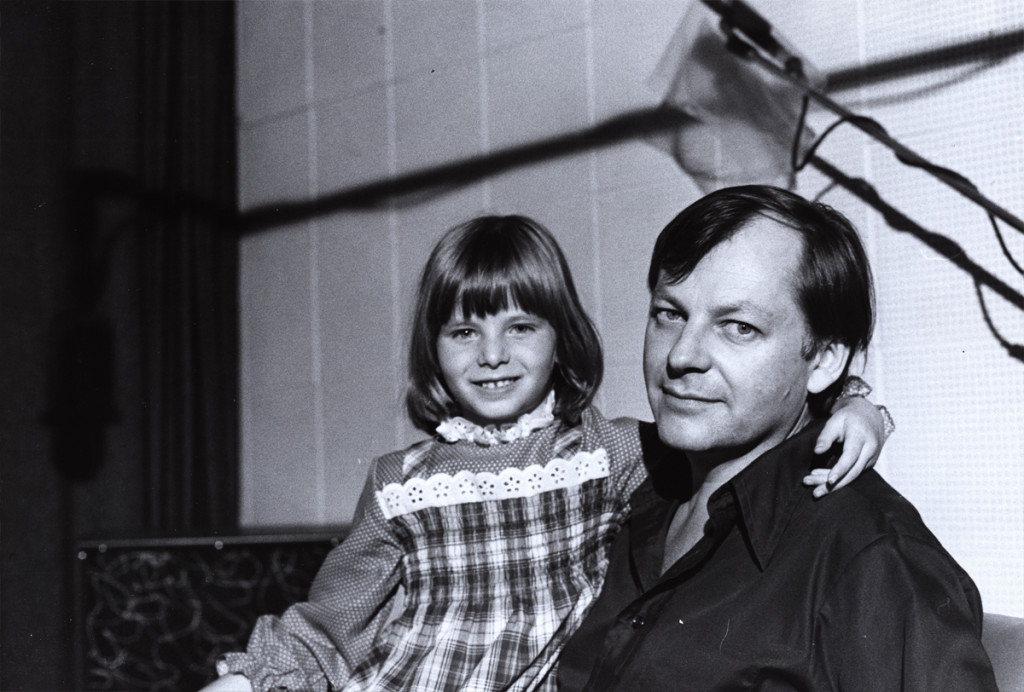 9
9
Here’s a picture of Dick Williams with his daughter,Claire.
Claire played the part of Marcella, the little girl at the film’s start.
They shot the live action in Boonton, NJ during the first days of the
production. All those hours they were out filming, I watched the shop.
Alone in an enormous darkened most of the time in the enormous office,
I could only spend time reading and rereading the script and sketching
my idea of some of the characters.Infrequently, the financial manager
of Lester Osterman Prods., the production company, would pass through.
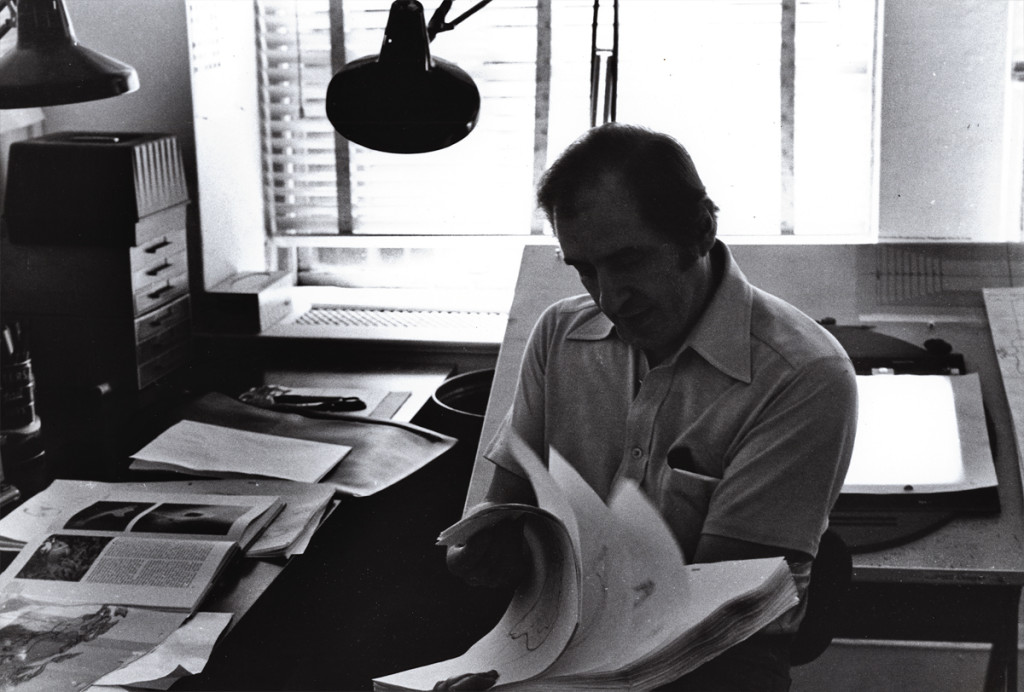 10
10
George Bakes was a fiercely independent animator who worked a short
while on the film. He must have started at Disney on Sleeping Beauty. He’d often
show a lot of Milt Kahl drawings he’d had from that film.
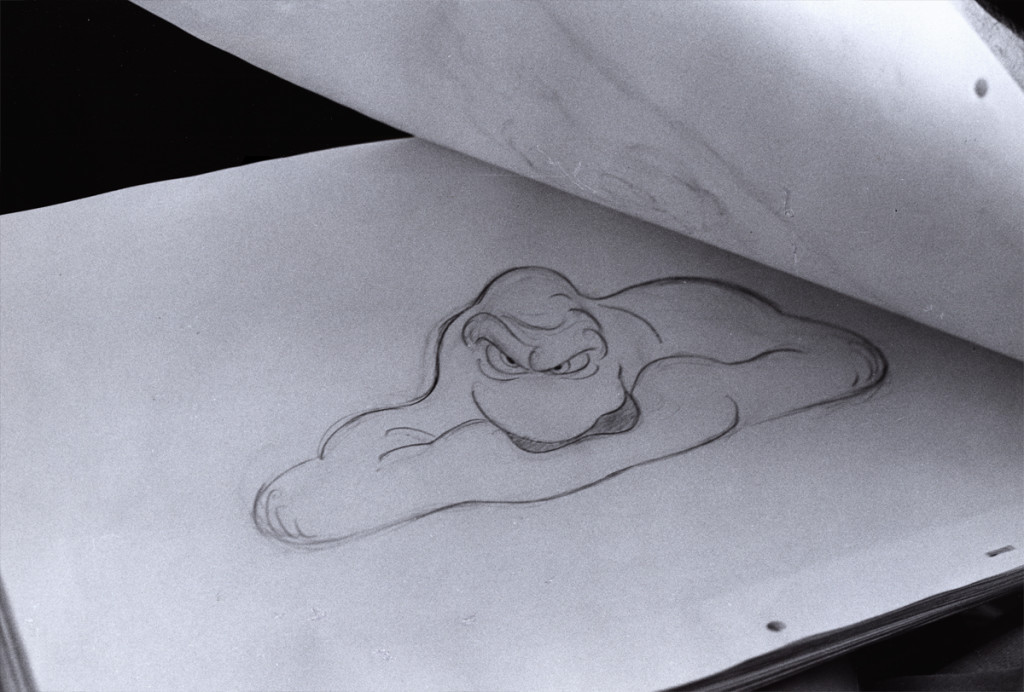 11
11
Baskes animated many of the cereal commercials of the day -
Trix, Honey Bee, Sugar Crisp bear, etc. For Raggedy he did the “gazooks.”
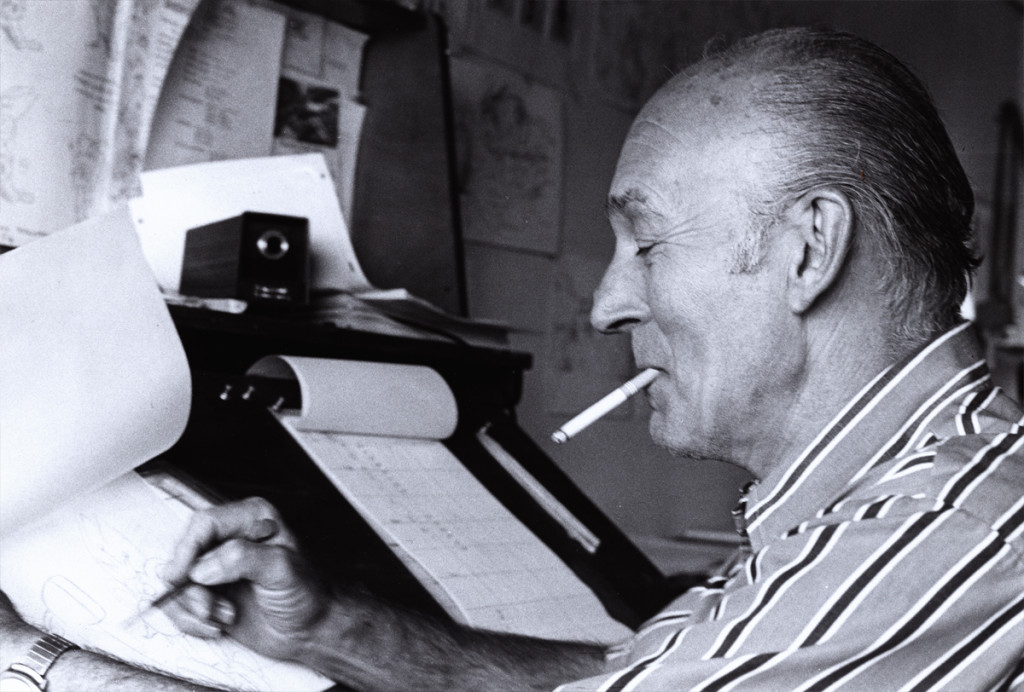 12
12
Gerry Chniquy was a brilliant animator straight out of WB.
He’d done a lot of Yosemite Sam animation for Friz Freleng.
It wasn’t far to go to cast him as the blowhard of a King, King Coo Coo.
Marty Brill voiced the character. Gerry Chiniquy,of course, did a fine job,
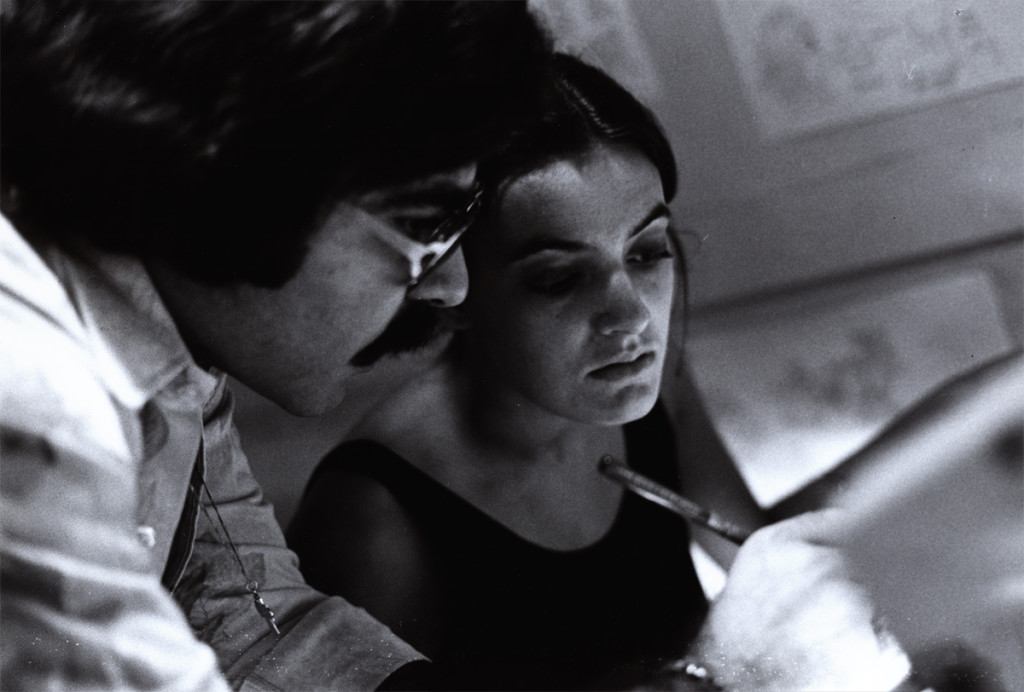 13
13
John Celestri had a style all his own although he idolized Bill Tytla.
Not a bad person to pick for a role model. John was an Assistant on
the film. Here he’s working with inbetweener, Amanda Wilson. Amanda was
the daughter of the great cartoonist and animation designer, Rowland Wilson.
The last of these photos will come next week. Many thanks to John Canemaker for the loan of the images. Any opinions tossed about here, are all mine and John is not to blame for them.
Books &Commentary &John Canemaker &Photos 28 Apr 2013 05:55 am
Raggedy Ann Photos
- John Canemaker recently loaned me a stash of photos of the Raggedy Ann crew. These were pictures that were used in his book on the “making of”. It was a better book than movie (as they often are). There are also some photos that didn’t make it to the book. John Canemaker shot all the photos, himself and all copyright belongs to him.
I thought I’d post the pictures and add some comments that pop off the top of my head. Hopefully, a couple of interesting stories will show up in my memories.
There are enough photos that it’ll probably take about three posts to get them all in. The next two Sundays are booked, I’d guess.
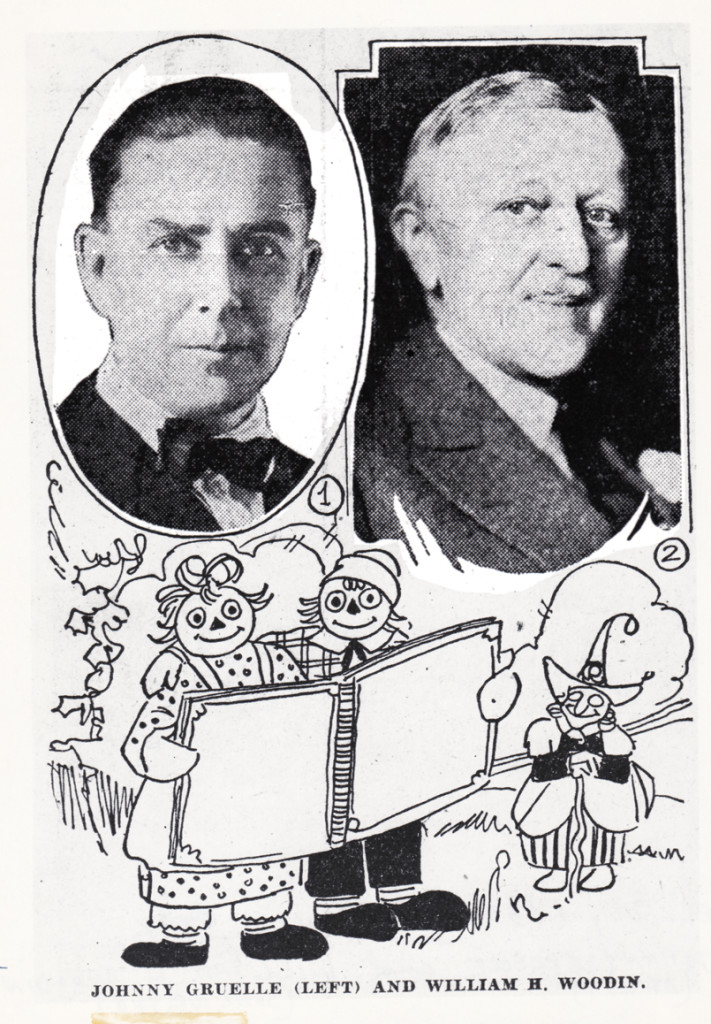 1
1Johnny Gruelle (artist, writer) and William H. Woodin (song writer)
Dec.28, 1930 Indianapolis Star – “Raggedy Ann’s Sunny Songs”
This was apparently a theatrical piece Johnny Gruelle
put together with his very successful characters.
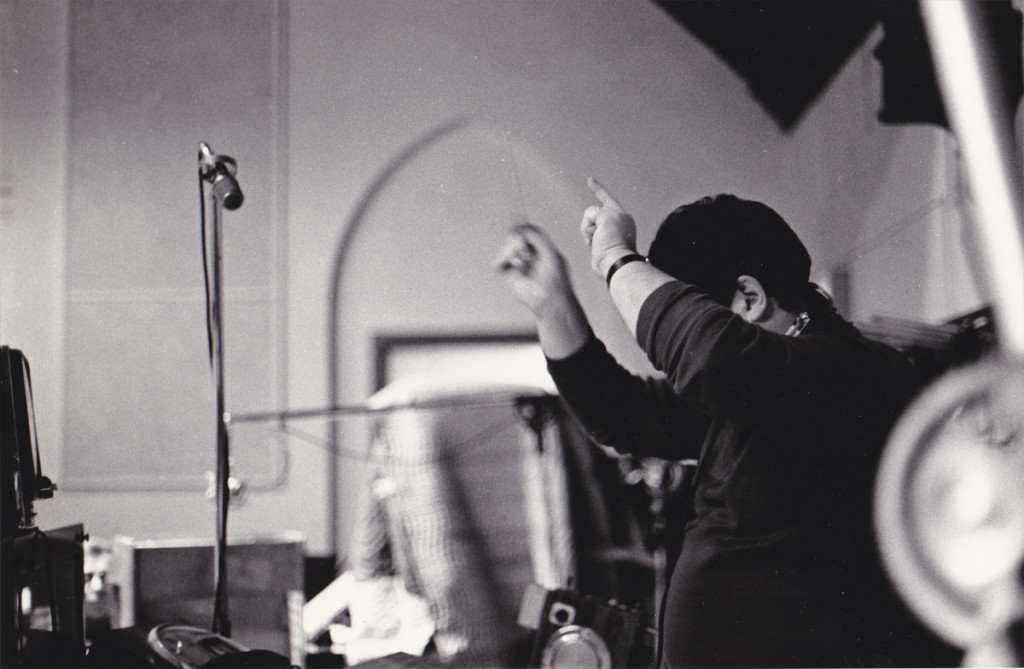 2
2
It all started with Joe Raposo, the composer of “Bein’ Green”
and many other hit Sesame Street songs. He wrote a musical for “Raggedy Ann
and Andy” and was made to see that it would make a wonderful animated musical.
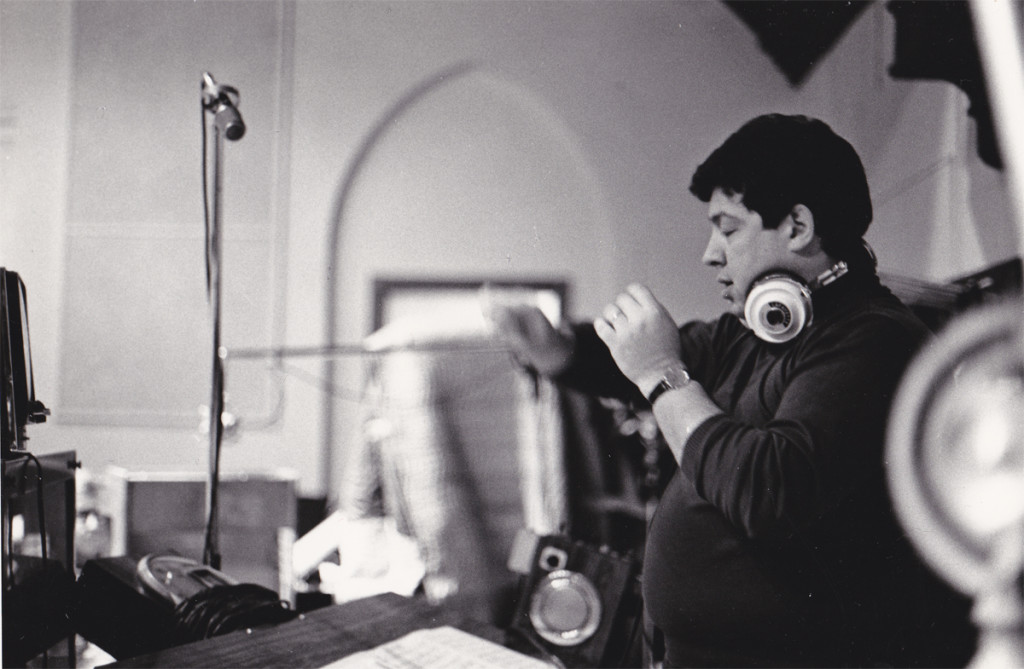 3
3
He wrote a lot of songs for the slim script and they prerecorded
the songs for the animation. We lived with a soundtrack of about
a dozen musicians playing this very nice score to the delicate voices
that sang the tuneful pieces.
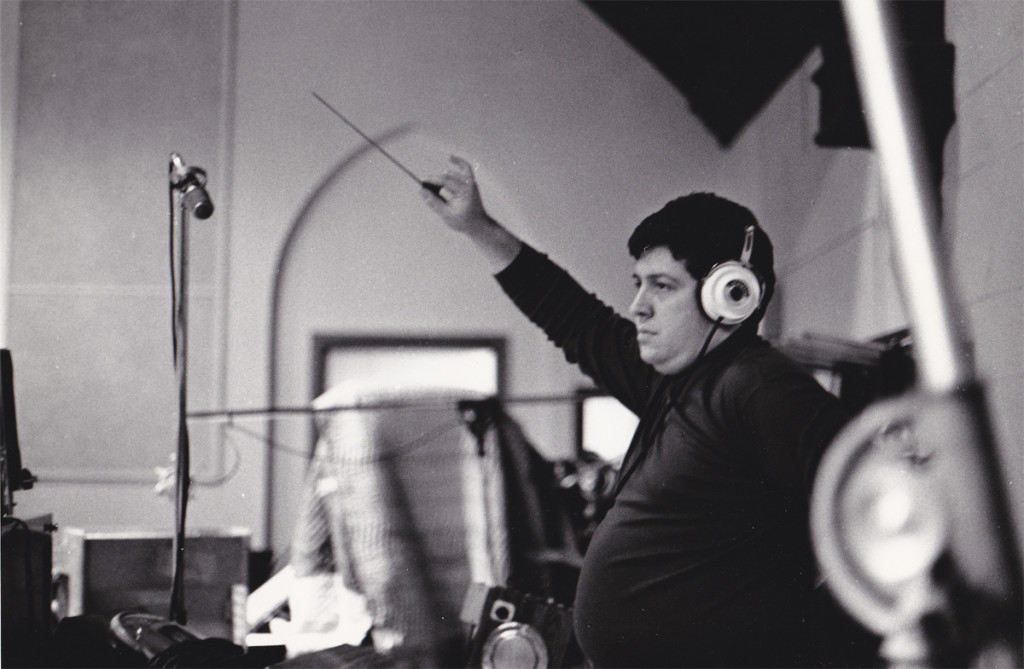 4
4
We heard this at least once a week as the animatic/story reel
grew into a full animated feature shot completely in Cinemascope.
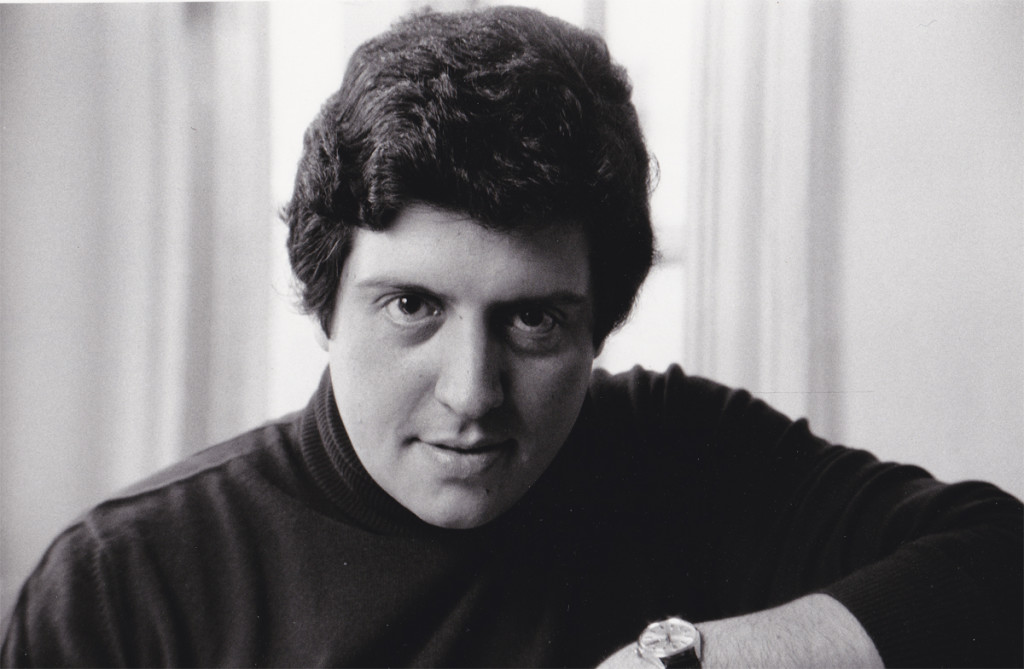 5
5
When the final film was released, that 12 person orchestra
became 101 strings and a big over-polished sound track.
No matter where you went the music was there and in the way.
It was too big, and the movie was too small. It was bad.
The track was incredibly amateurish. The composer had too much control.
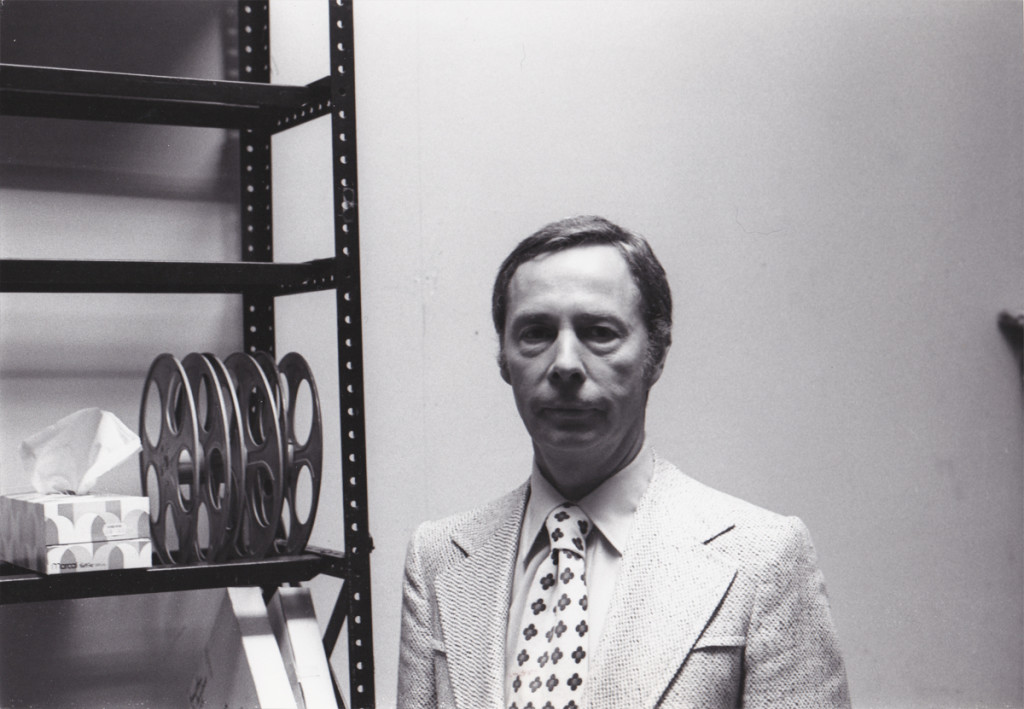 6
6
This was Richard Horner. He was one of the two producers of the film.
Stanley Sills (a Broadway producer and Beverly’s brother) was the
other producer who didn’t know what he was doing.
They represented Bobbs-Merrill who owned the property.
I really liked Mr. Horner. We met again a number of years later
when Raggedy Ann was distantly behind us. I’d offered to take Tissa to church,
one Easter Sunday; Richard Horner and wife were there. He asked to meet with me.
He sought advice on some videos of artists and their work that he was producing,
and hoped I could offer my help in leading him to some distributors.
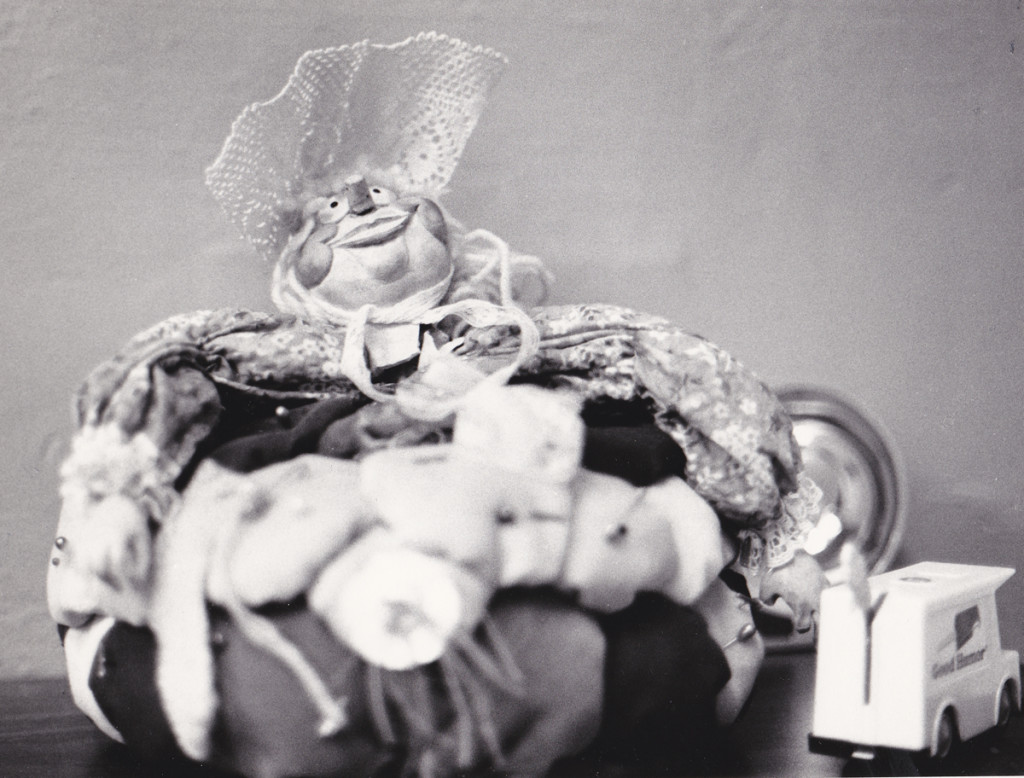 7
7
This is one of the dolls in the play room,
Susie Pincushion. She was charming.
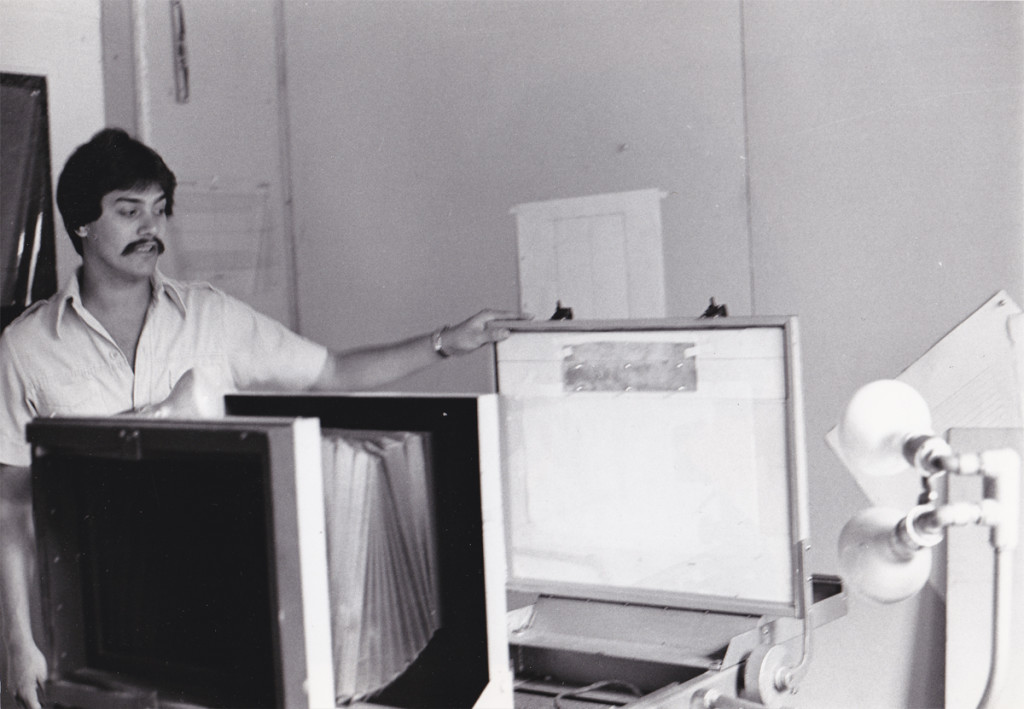 8
8
This is Cosmo Pepe; he was one of the leaders of the Xerox department.
It was Bill Kulhanek‘s department, but Cosmo really did great work.
They had this room-sized machine that they converted drawings into cels.
It was all new to NY, and the whole thing was so experimental.
Especially when Dick decided to do the film with grey toner rather than black.
The film always felt out of focus to me (even though it wasn’t.)
In the end when they rushed out the last half of the film, Hanna Barbera
sub-contracted the Xeroxing, and it was done in a sloppy and poor black line.
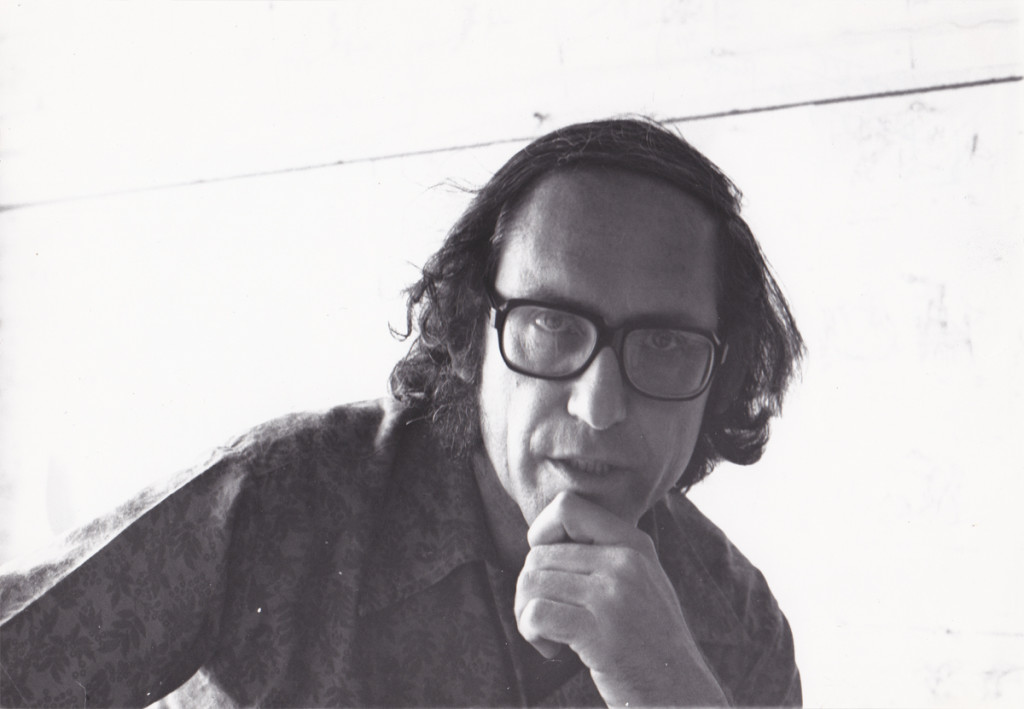 9
9
This is Corny Cole. He was the designer of the film, and all the great art
emanated out of his Mont Blanc pen nib. Or maybe it was a BIC pen.
Whatever, it was inspirational.
I wrote more about him here.
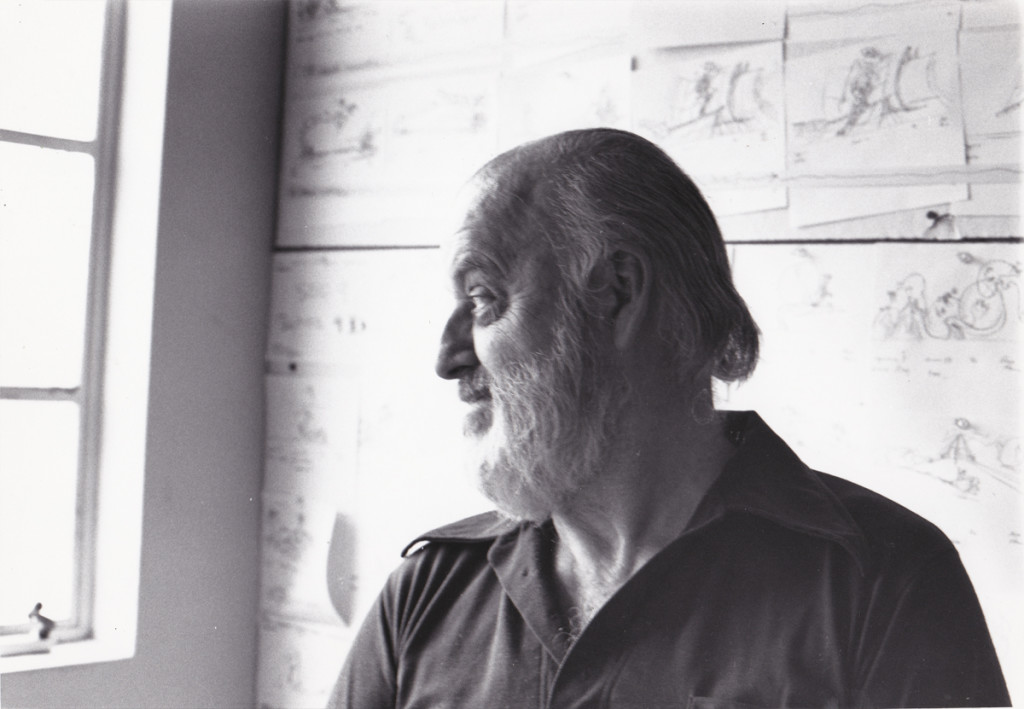 10
10
The gifted and brilliant animator, Hal Ambro. Can you tell that
I admired the man? I wanted badly to meet him during this production,
but that never was to happen. Now, I can only treasure his work.
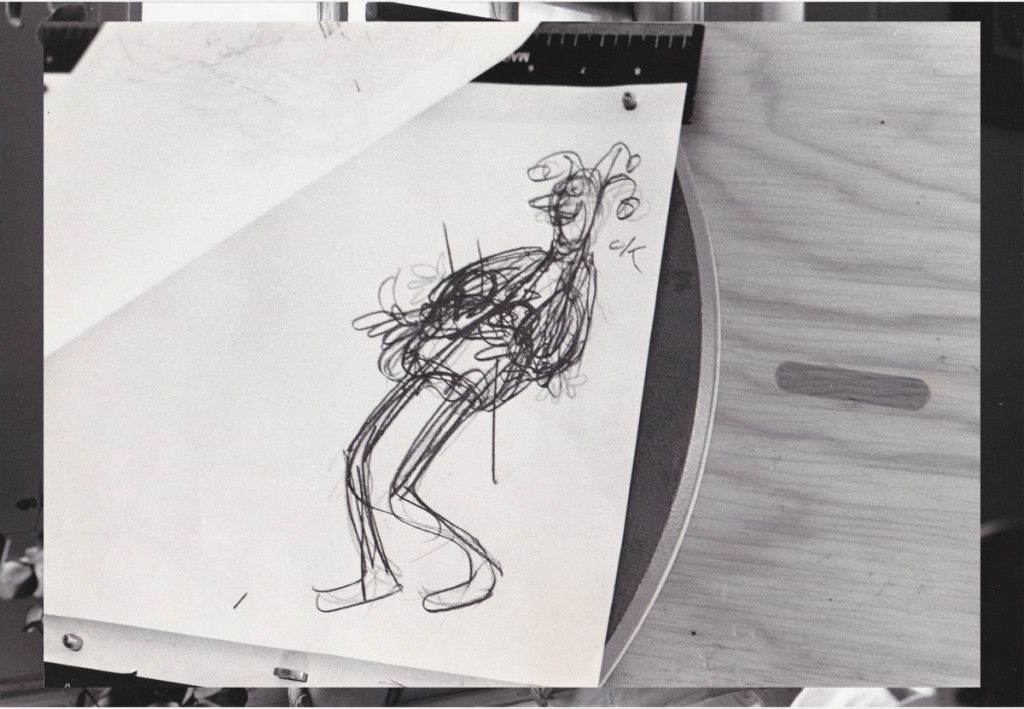 11
11
This is a very rough planning drawing that Grim Natwick did on
the Jack-in-the-Box he animated. See the scene here.
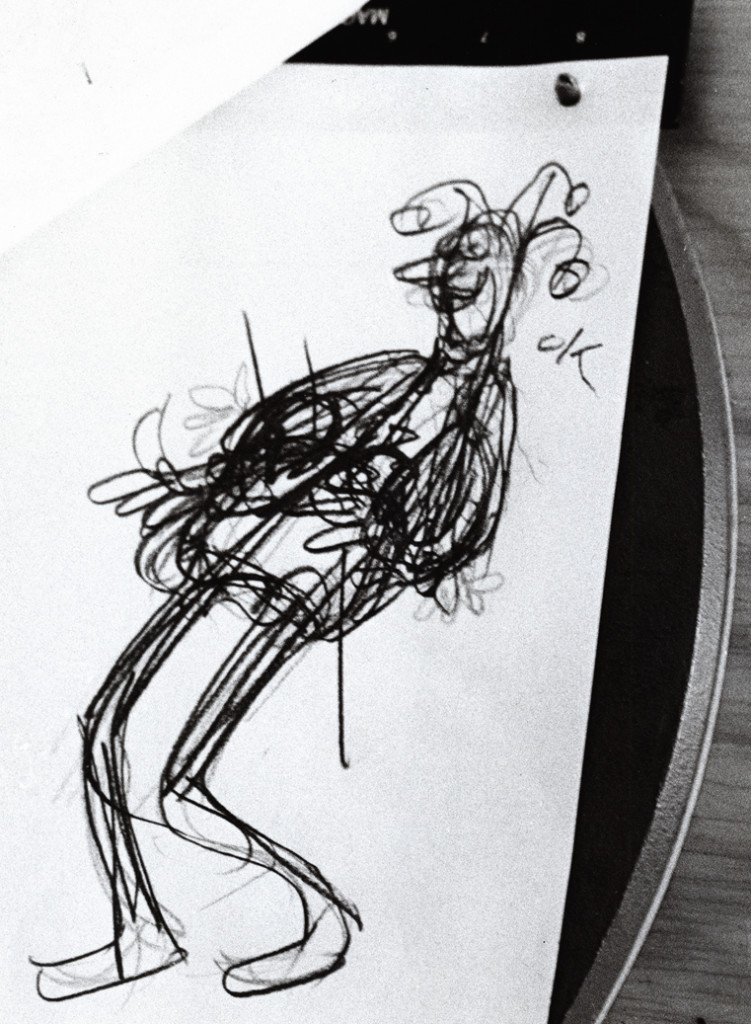 12
12
Here’s a close up of that very same drawing.
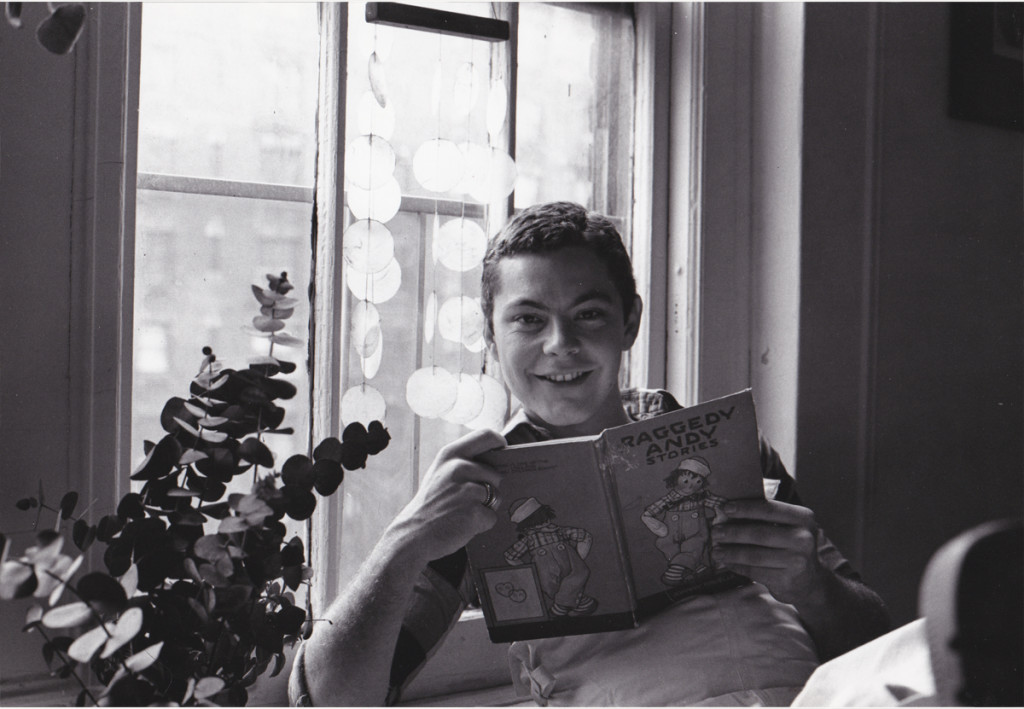 13
13
Mark Baker did the voice of Raggedy Andy.
He’d won the Tony Award as Best Featured Actor in the musical, Candide.
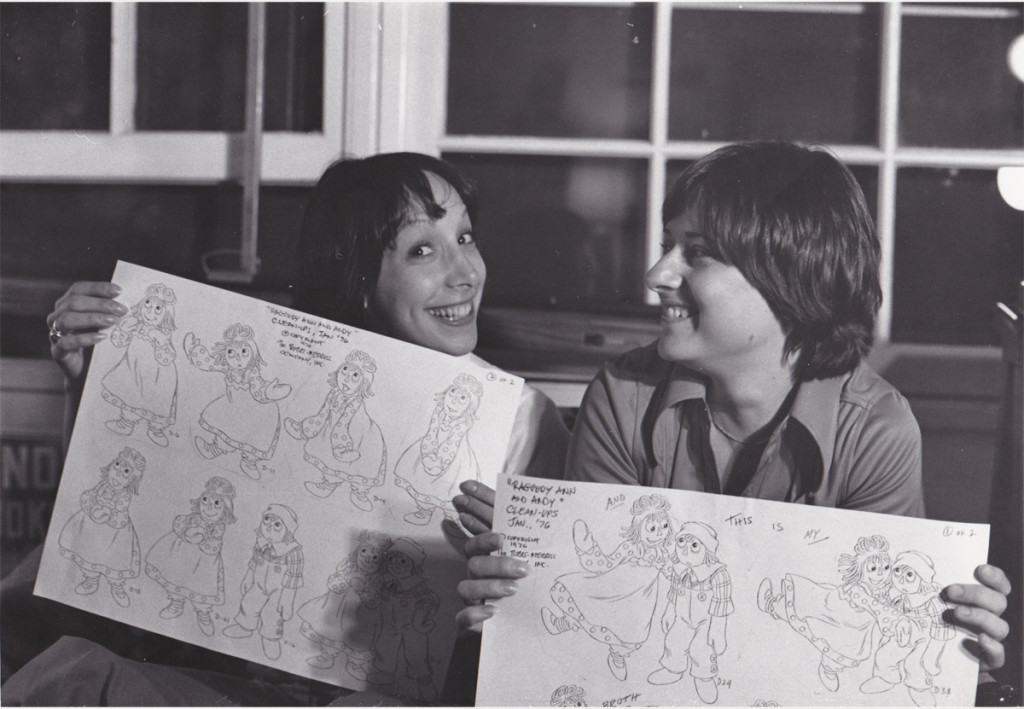 14
14
Didi Conn, the voice of Raggedy Ann, with Chrystal Russell, an animator
of Raggedy Ann. She backed up Tissa David who was the primary actor for
that character and did most of the film’s first half. Chrystal did many
scenes in the first half and most of the second.
She had a rich identifiable style all her own.
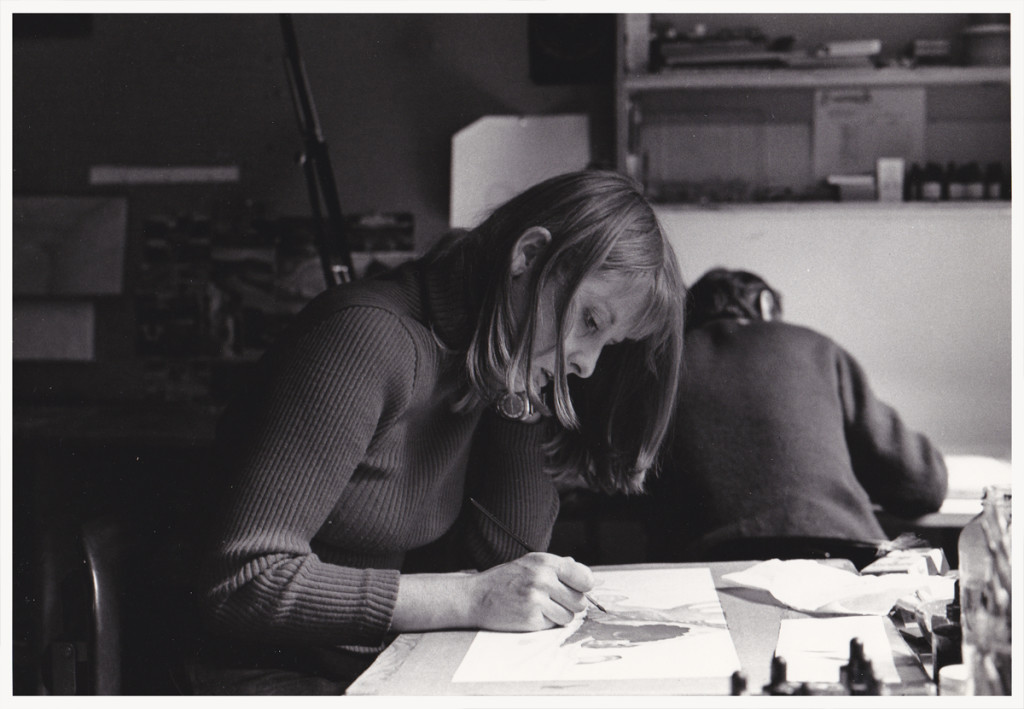 15
15
Sue Butterworth, head of the BG dept who designed the watercolor style
of the film. Michel Guerin, her assistant, can be seen in the rear.
Bill Frake was the third part of that BG department.
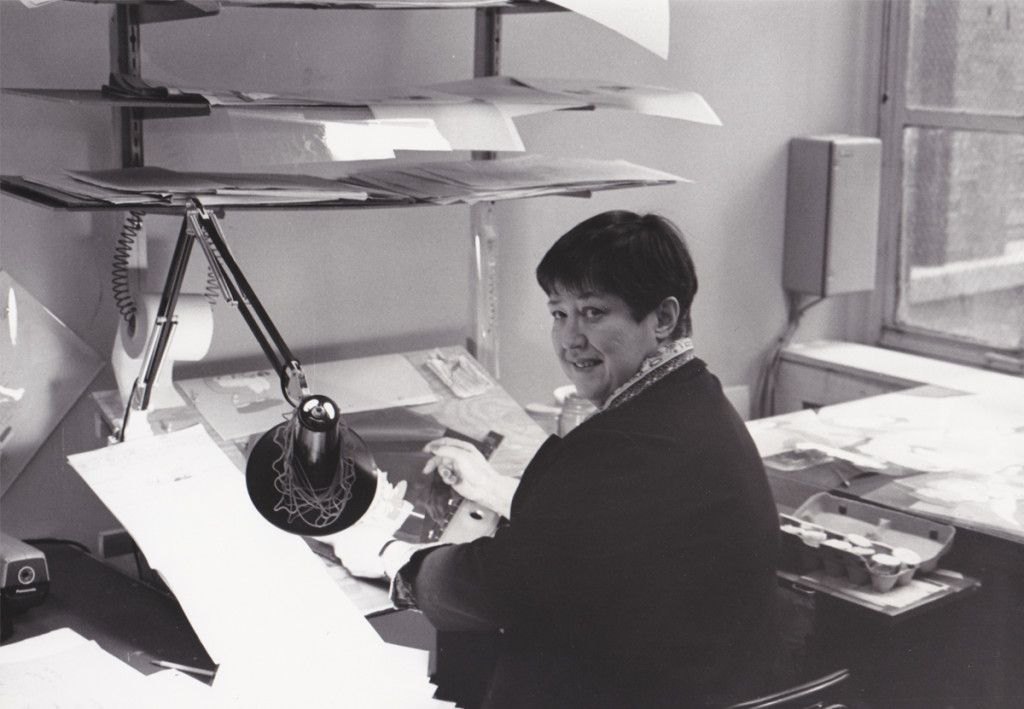 16
16
Painter, Nancy Massie. A strong and reg’lar person
in the NY animation industry. She’d been working forever for a reason.
On the average, I spent about an hour a day down in the Ink & Pt dept.
Often they had problems to resolve with some animator’s work. Either the
exposure sheets were confusing or they didn’t match the artwork, or there
was some question that they found confusing. My being available made it
helpful to them, and I did so without hesitation.
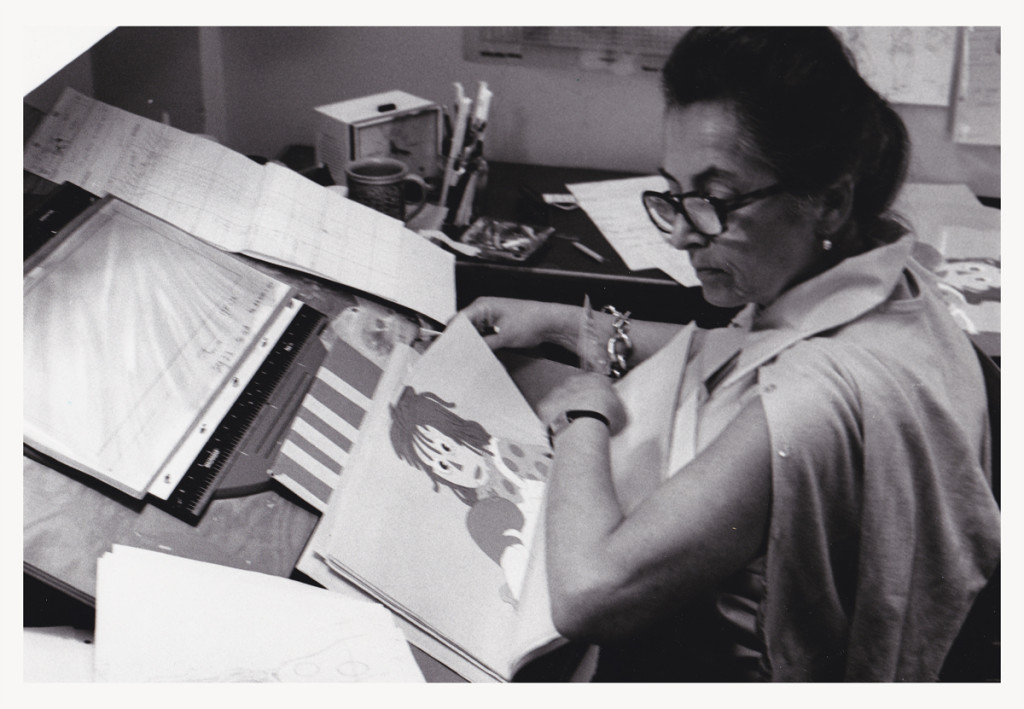 17
17
Checker, Klara Heder. Another solid person
within the NY industry.
Generally, before a scene left my department for the I&Pt dept., I’d
have studied the exposure sheets and felt I knew the scenes before
they were handed out to the Inbetweener or Assistant. It meant taking
a lot of time with the work in studio so that I was not only prepared
to answer questions of a checker but the Inbetweener as well.
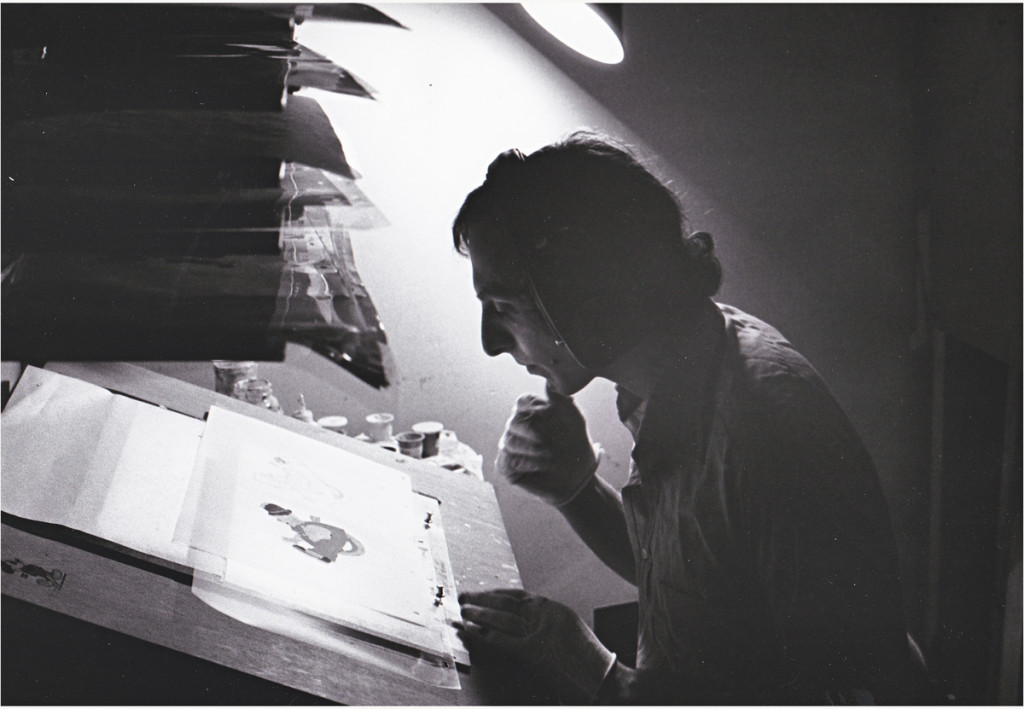 18
18
Sorry I don’t know who this is. If you have info,
please leave it for me. For some reason, I’d thought
he was an inbetweener (which would’ve made it odd for
me not to recognize him by name.) Apparently he’s a painter.
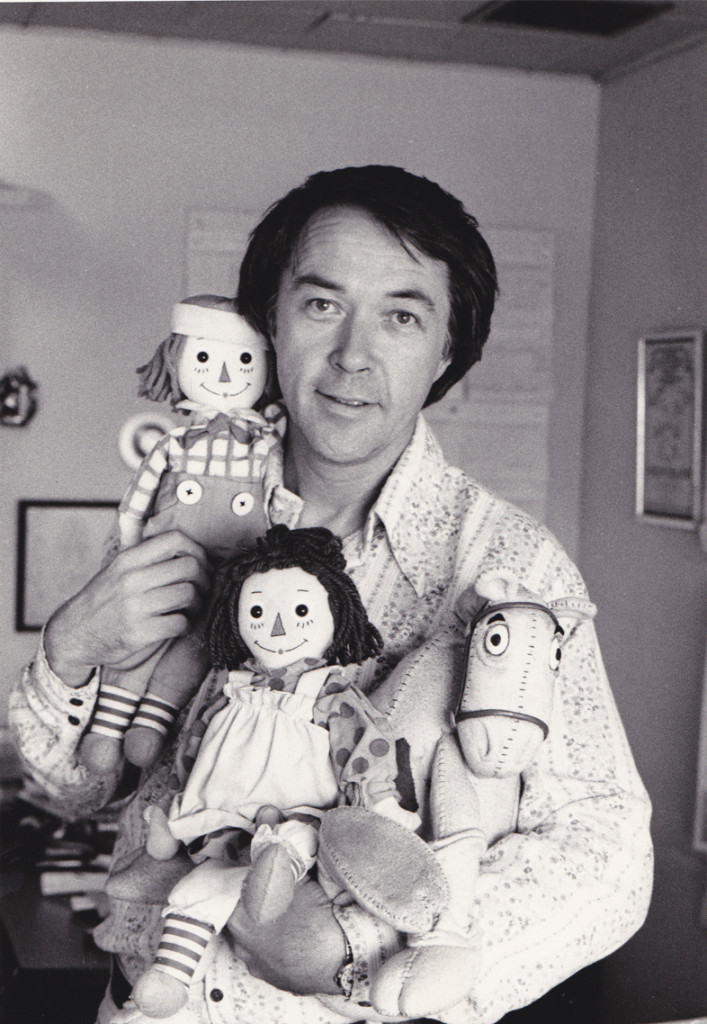 19
19
Carl Bell was the West Coast Production Coordinator.
We spoke frequently during the making of the show.
When I left the film, I went to LA for a couple of weeks.
Chrystal Russell threw a small party for me, and Carl came.
(I think he might have brought Art Babbitt, who was there.)
The group was small enough that we could have a talk that we all
participated in. We talked for some time (though not about
Raggedy Ann.) It was great for me.
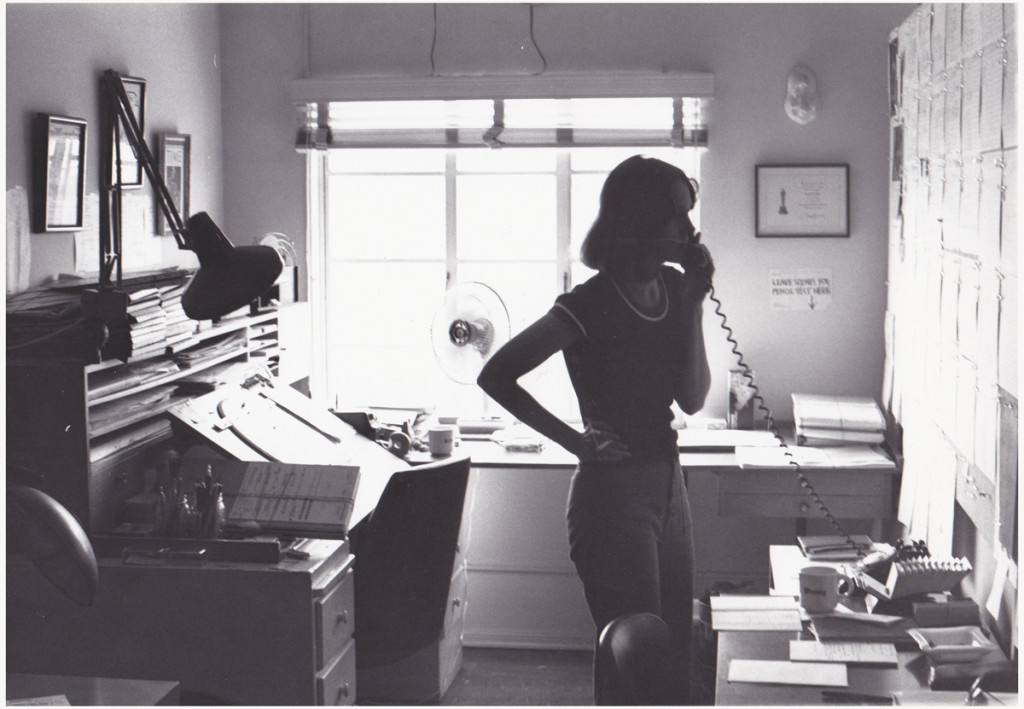 20
20
Jan Bell, Carl’s wife, was the West Coast Office Manager.
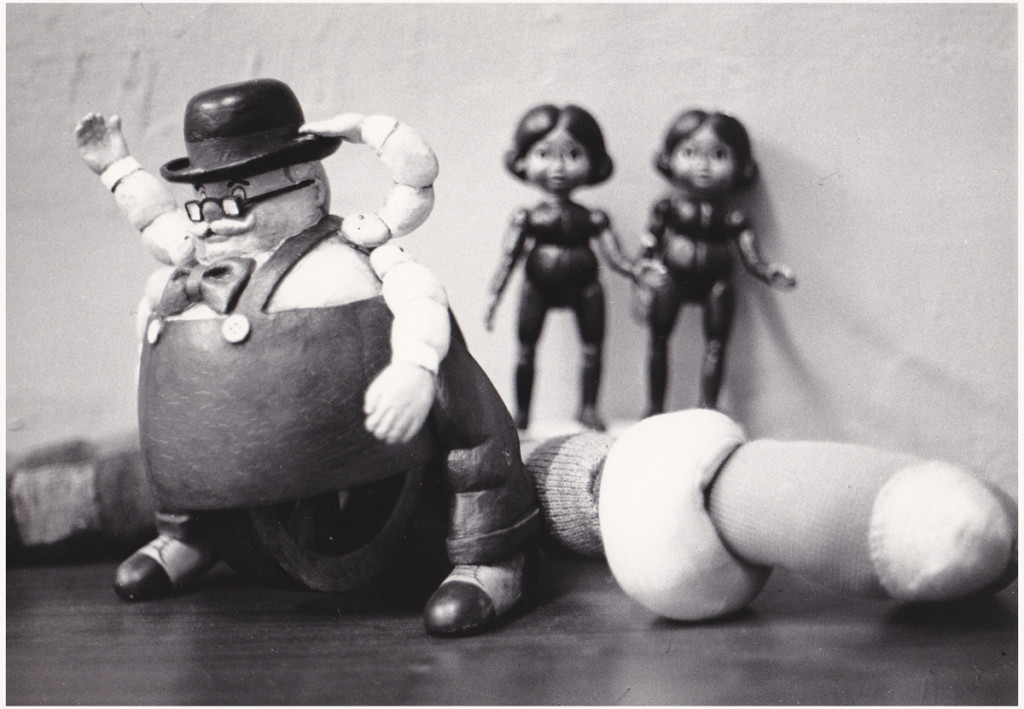 21
21
Maxie Fix-it. This was a great doll that wound up to get the legs going.
He rolled around the floor beautifully. The “Twins” in the back were animated
by Dan Haskett. though I’m not sure they gave him credit for it. I was a bit
embarrassed by these characters. They were just a naked bit of racism running
about our cartoon movie for very young children.
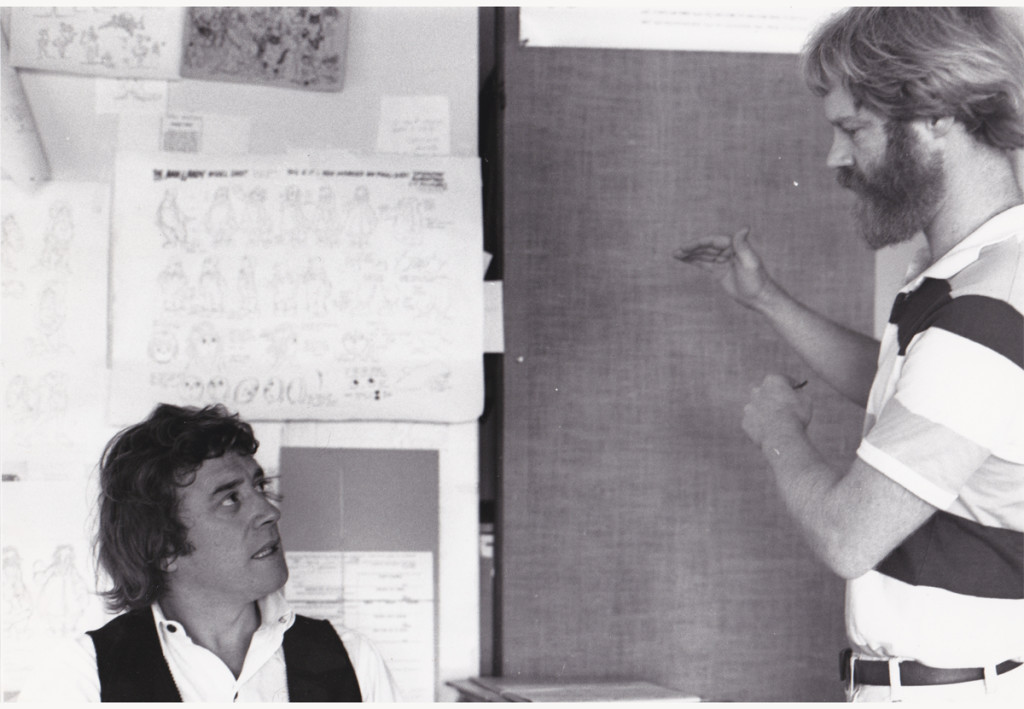 22
22
Gerry Potterton (left) and John Kimball (right).
Gerry was one wonderful person. I always enjoyed spending time with him.
He produced/directed a number of intelligent, adult animated films.
This includes an animated Harold Pinter‘s Pinter People.
After Raggedy, I tracked Gerry down to get to see Pinter’s People. It was
rather limited but full of character. Gerry knew how to handle the money
he was given, unlike some other directors.
John Kimball was, at the time, not in the caliber of Babbitt or Ambro or
David or Hawkins or Chiniquy. However, he did some imaginative play
on a few scenes which were lifted whole from strong>McCay’s Little Nemo
in Slumberland. One of these scenes I animated but was pulled
from it before I could finish it. I had too much else to do with the
tardy inbetweens of Raggedy Ann (an average of 12 drawings per day)
and the stasis of the taffy pit (an average of 1 inbetween per day).
Too many polka dots on Ann and too much of everything in the pit.
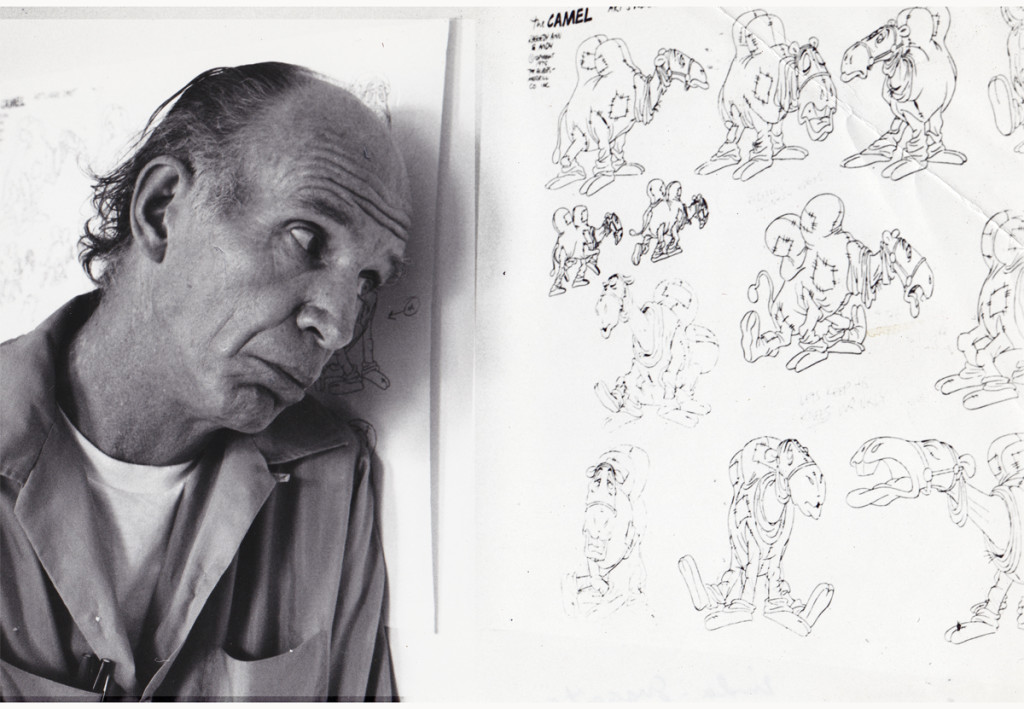 23
23
Fred Stuthman, the voice of the camel with the wrinkled knees.
He did add a great voice for the camel, though for some reason
I remember his being a dancer, predominantly.
All photos copyright ©1977 John Canemaker
.
